The 100 Best Documentaries of All Time
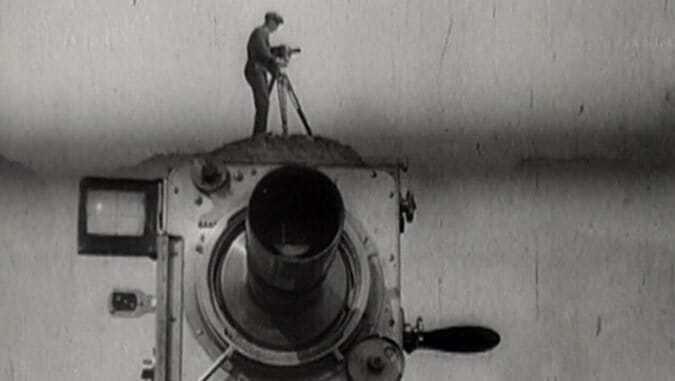
In documentary filmmaking, truth is almost always filled with lies.
It’s just the nature of the form, really—of any filmmaking at all, for that matter. Even a home video recording, if you’ve ever made or watched or starred in one, is marred by manipulation: Whether you’re aware you’re being “watched” or not, your truth is a sort of surreal quilt of camera placement, cuts and atmosphere, totally mitigated by the lens and then, further down the food chain, the ultimate observer. If you know you’re being watched, you act accordingly; if you don’t, the recording may carry a subtle tone of voyeurism, of intrusiveness—the feeling that something isn’t quite right.
And yet, from direct cinema to Dogme 95, truth has always been an idealistic goal for many filmmakers, and not necessarily the purity of it, but the translation of its most deeply held essentials. Arguably, documentary filmmaking has always been at the forefront of that aim, though during much of its primordial beginnings—especially throughout the 1920s, ’30s, and ’40s—documentary filmmakers trolled truth as if it was yet another stuffy branch of bourgeois power.
In Land Without Bread (1933), Luis Buñuel parodied the white guilt of popular travelogue docs of the time, pointing out that sadness and economical devastation existed in Spain itself—no need to travel to some faraway land. In Nanook of the North (1922), the life of an Inuit clan was notoriously messed with. And Man with a Movie Camera (1929) pretty much just made a bunch of shit up. Their goals weren’t to leave truth unfondled, but to say that an unfondled truth is an unexplored one: shallow and meaningless.
Once Jean Rouche, Frederick Wiseman, D.A. Pennebaker and the Maysles, however, pioneered and then defined throughout the 1950s and ’60s what came to be known as cinéma vérité, documentary filmmaking shouldered the burden of truth, resolving to allow life to operate on its own, brushed only briefly by the manipulative fingers of the filmmaker. This was coupled with advances in filmmaking technology, notably that equipment became lighter, and more mobile. In turn, crews shrank, and coverage became paramount. That Nick Broomfield’s films are filmed with a minute crew on minute budgets, or that Oscar-winning Searching for Sugar Man (2012) was captured partly on an iPhone camera, means that today, as it is with most art, anyone can be a documentary filmmaker.
Which isn’t a bad thing. Because truth belongs to the people, by definition—it is ours to shape and hone and mold into something that enriches each of our lives and each of our worldviews however we see fit. That the following list leans heavily on films released in the past five years isn’t a coincidence, nor is it a factor of some shortsighted list-making. Instead, it points directly to our increased capacity to capture, reproduce and respect truth. If anything, we’re coming full circle.
Will the truth set you free? Probably not, but we believe the following 100 documentaries are the all-time greatest attempts to find out.
100. Deep Water
Directors: Jerry Rothwell, Louise Osmond
Year: 2006
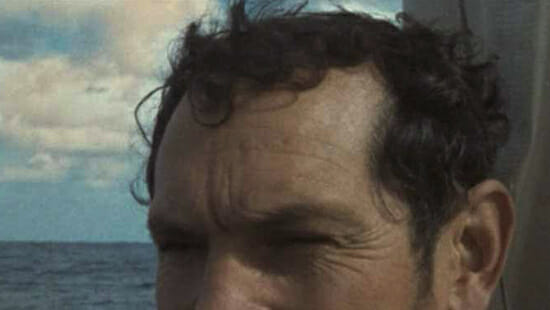
Louise Osmond and Jerry Rothwell’s 2006 documentary Deep Water feels like an homage: to sailing, to the sea, to adventure, to vindaloo paste, but mostly to the unknown. In it, Osmond and Rothwell, with narrative help from friends and then—sure—Tilda Swinton, chronicle the 1968 round-the-world Sunday Times Golden Globe yacht race, wherein nine of the world’s best sailors, plus one large-hearted electronics engineer named Donald Crowhurst—pretty much the definition of a “weekend sailor”—set out to circumnavigate the globe. They started in the UK, went south and around the Cape of Good Hope, across the Indian Ocean, around Cape Horn, and then back across the Atlantic to complete the loop. It was supposed to take about nine months. Instead, Crowhurst’s story found incomprehensible tragedy—and weirdness.
While Deep Water often trumps melodramatic musical cues and interstitial vignettes even Errol Morris would call cheesy, pushing the narrative into heartrending territory the story itself could easily attain on its own, long passages of screen time are devoted, just as simply, to staring at the sea. Like Herzog’s seemingly interminable shots of whitewater on the Amazon in Aguirre, the viewer is expected to hold her gaze. It’s a hypnotic sight; it’s also simultaneously overwhelming and calm, vicious and passive, loud and susurrate to the point of silence. In that middle ground, between poles (or, rather, where two ends meet, at both the end and the beginning), there is the terror of the unknown. There is this ocean and that ocean and thousands of miles of incomprehensible vista. —Dom Sinacola
99. Low and Clear
Directors: Kahlil Hudson, Tyler Hughen
Year: 2012
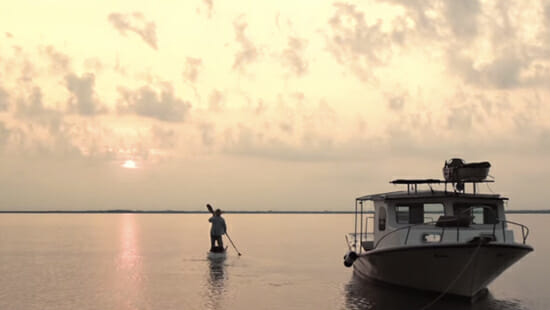
Reading the description of Kahlil Hudson and Tyler Hughen’s remarkable film—two friends who are world-class fishermen, half a country apart, take a trip to British Columbia to fly fish and reconnect—you’d think that you’re in for a slow, meditative, deeply felt journey with beautiful scenery so bounteous you’re bound to take it for granted. It is all of that: meditative and deeply felt and beautiful—but it’s anything but slow. Having two fascinating, outspoken and often at-odds subjects helps, as does the deft and slightly mischievous touch of editor Alex Jablonski. But most of all, Hudson and Hughen seem determined not to settle for a tone poem. They want to tell something thrilling—and what they come up with is up to the task, a mesmerizing feast for the senses. —Michael Dunaway
98. Spellbound
Director: Jeffrey Blitz
Year: 2002

The oh gawrsh factor is through the roof in this crowd-pleasing look at the efforts of eight youngsters, in 8th grade and under, to win the 1999 Scripps National Spelling Bee. It’s also a surprisingly suspenseful watch, thanks to some smart editing and the bright-eyed charisma of these kids—among some 250 hopefuls—cheered on by parents, teachers and audiences at these de facto intellectual Olympics. A quintessentially “American” portrait, Jeffrey Blitz’s Oscar-nominated film touches on issues of race, class and ethnic background in delving into each competitor’s journey to the event in Washington D.C., but Spellbound gets a pass for its many tropes because they’re, well, true—that, and its up-with-nerds charm. —Amanda Schurr
97. Dig!
Director: Ondi Timoner
Year: 2004

Chronicling seven years in the turbulent career of the Dandy Warhols and the Brian Jonestown Massacre, Dig! reveals the messy details of not only what it meant to rise in the ’90s indie rock scene, but what it took to navigate the complicated friendships and ambitions that formed it. The film goes beyond footage of sex and drugs to tell the urgent story of two bands seeking fame and radical musical revolution—but mostly fame. At the most, it’s a test of endurance: To what extent are you willing to tolerate the excessively putrid behavior of people who may (or may not) be making brilliant art? Those on the fence with Kanye, take note. —Caroline Klibanoff
96. Murderball
Directors: Henry Alex Rubin, Dana Adam Shapiro
Year: 2005

As a documentary that sets out to shatter our assumptions about quadriplegics, Murderball tries admirably to paint its characters as regular guys. Except these aren’t; they’re testosterone-fueled jocks proud of their aggressive playing and even prouder of their dicks (which still function, they’re quick to point out, when their legs or arms don’t). These young men devote themselves to wheelchair rugby, which they aptly dubbed “murderball” before it gained enough popularity to earn corporate sponsorship and a place in the Paralympic Games. It’s a sport played by teams in armored wheelchairs, by guys who arguably have chips on their soldiers rolling around on an indoor court in order to knock each other sideways and incite a roar from the crowd. It has all the trappings of any other team sport, including hot-headed coaches, displays of bravado and nail-biting championship games. Yet, despite the adrenaline and dick-waving, the heart of the film is something more important than just a game: It’s watching these guys struggle to accept themselves. Each tough, competitive personality shelters a damaged but recovering self-image. —Robert Davis
95. Room 237
Director: Rodney Ascher
Year: 2013

There exists a rare species of obsessive cinephile: the hyper-fan who focuses on one film, mentally and emotionally ingesting it dozens, maybe hundreds, of times. Along a certain parallel, there is also a serious breed of conspiracy theorist, compulsive in his or her beliefs, taking things far beyond just watching Doomsday Preppers for fun. Push these two types inextricably together, you get Room 237, the confounding, eye-opening and often hilarious documentary about individuals whose over-wired brains are devoted to one cinematic masterpiece, Stanley Kubrick’s The Shining.
The most outlandish—and perplexing—theories in Room 237 posit The Shining either as a vehicle meant to comment on dark, oppressive periods in history, or as a massive, cryptic revelation. As a cinema sociologist, director Rodney Ascher acts as non-participant observer, letting his Room 237 subjects sell themselves, leaving us to jump on, laugh or stare in amazement. As a documentary filmmaker, Ascher voraciously digs into the stories, freezing frames from the 1980 classic, adding explanatory graphics and complex maps of the hotel’s physical layout. As the subjects analyze Kubrick, Ascher analyzes their analyses, which in turn inspires an analysis of Room 237 itself, making for a documentary film that twists in on its own guts so thoroughly one can’t help but feel similarly obsessed by film’s end. —Norm Schrager
94. L’amour Fou
Director: Pierre Thoretton
Year: 2010
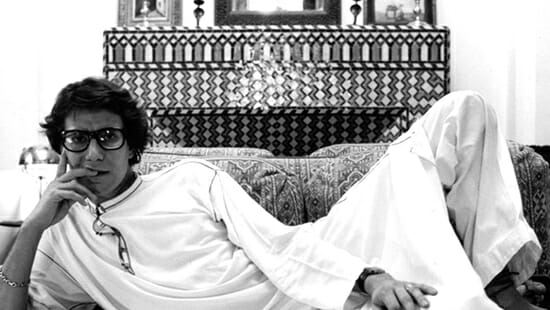
At first, this exceedingly quiet film seems to offer little in the way of insight: through the laconic accounts of long-time partner Pierre Bergé, the story of fashion industry icon Yves Saint Laurent is laid out in strikingly economical detail. He gained notoriety, and with it critical respect, as he lost much of a perspective on the bounds of his wealth and the impenetrability of his depression. In fact, upon learning Laurent had only a few weeks to live due to brain cancer, Bergé elected to keep the information from his partner—and husband, married only a few days before Laurent’s death—because he knew the designer wouldn’t be able to functionally deal with the news. In these moments, L’amour fou plays out like a touching, though slight, testament to a great artist and the unyielding love some people felt for him. It’s probably no surprise that as his profile rose, Laurent began to pull away, both physically and mentally, from the person with whom he chose to spend his life.
Yet, the film’s success lies in the way it thoughtfully dwells over every insignificant piece of rare art or expensive accoutrement amassed by the couple over their lifetimes, so much so that (especially with Laurent’s presence removed) Bergé’s home looks little more than a stuffy, poorly organized museum—fastidious and far from homely. And then, when Bergé endeavors to sell all of it on auction, the sense of loss grows to tenuous levels: Is he trying to find closure, or instead proving that everything they accumulated did nothing to make their lives any better, or any worse, when viewed in retrospect? Bergé, the inheritor of an astounding amount of money due to the auction (which Thoretton documents plainly, watching Bergé as he calmly hears one astronomical closing bid after another), finds nothing in the end but whatever security all that wealth provides … which, as we watch Bergé blankly stare out of a dreary window, Come Aguiar’s perfectly nuanced score accompanying his silence, feels like even more of nothing at all. —D.S.
93. Koko, the Talking Gorilla (Koko, le gorille qui parl)
Director: Barbet Schroeder
Year: 1978
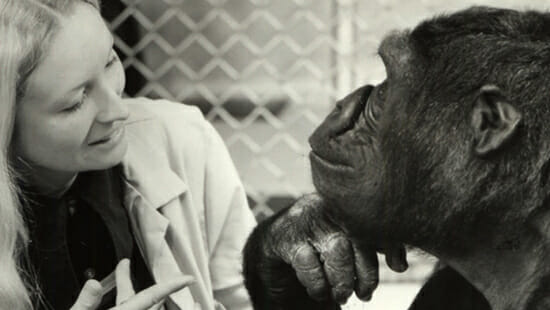
Koko, the Talking Gorilla uses the story of Koko, a gorilla who is able to communicate through sign language, to ask: “What rights should animals have?” As part of that project, director Barbet Schroeder plays with various levels of conundrum: money-focused interests want to put Koko on display while Koko’s trainer, Penny Patterson, argues that Koko should have the same rights afforded human children, because Koko demonstrates the same capacities as a typical young child. To his credit, Schroeder doesn’t shirk the obvious fact that the whole reason any of us are watching a documentary about a talking gorilla is right there in the title: it’s a talking gorilla, meaning we too are implicated in the exploitation of Koko’s humanity. Schroeder also chooses to linger on Patterson’s confessionals and her interactions with Koko, suggesting that Patterson’s expectations may be far too ambitious, and that her faith in Koko’s humanity might say more about Patterson herself than Koko, the latter of whom spends most of the film studiously ignoring the camera.
Watching it now, I’m struck by another way to view the film. Because this was released the same year as the English translation of Michel Foucault’s The History of Sexuality, it’s also possible to see the film as an exploration of how scientists were dealing with emerging anxieties over the postmodern assertion that “nurture” was as or more important than “nature.” In that sense, Koko is merely a prop for a broader discussion about what the “self” is, sure, but it grants the film an intellectual and cultural context that makes it more than just an early missive in the debate over animal rights. —Mark Abraham
92. The Hellstrom Chronicle
Directors: Walon Green, Ed Spiegel
Year: 1971

When Dr. Nils Hellstrom (played by a flamboyantly serious Lawrence Pressman) says that The Hellstrom Chronicle will convince us of our inherent folly in assuming we will forever be Earth’s dominant species, we balk—because why wouldn’t we? His statement seems laughable at best, and evidence of his mental instability at worse. Yet, in proving that the Kingdom of Insects will eventually dominate the globe due to a brilliant combination of groupthink, corporeal efficiency and sheer attrition, the film is a convincing case for, at the very least, respecting the lives of those creatures we habitually take for granted. Filmed in sumptuous close-up, timelapse and nearly suffocating intimacy with worlds that, typically unavailable to us, feel completely alien, The Hellstrom Chronicle gleefully farts all over stuffy nature documentaries and sci-fi B-movies and cheap-o public access diatribes in order to come up with a viewing experience that is awful, hilarious and terrifying all at once. —D.S.
91. Biggie & Tupac
Director: Nick Broomfield
Year: 2002
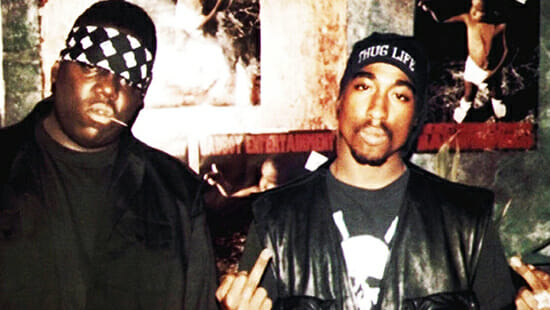
From its very first moments, Biggie & Tupac—a sort of truther’s glimpse into the murders of rappers Notorious BIG and 2Pac—is an exceptionally strange film. Director and narrator Nick Broomfield speaks in a clipped cadence, as if English isn’t his first language, and Earth isn’t his home planet. That he is somehow able to waddle his way into the most exclusive (and sometimes terrifying) situations is nearly incomprehensible, until one realizes that, to some extent, all his weirdness probably makes him seem so non-threatening that the folks who spill deeply incriminating confessions probably never figure his footage will ever see the light of day. And yet, Biggie & Tupac is endlessly compelling, far from an actually competent procedural but still ringing with enough sincerity that, buried beneath Broomfield’s weirdness and his very dubious journalistic intentions, there must be something true he’s tapping into. I’ve heard Broomfield referred to, among other epithets, as a “bottom-feeding creep,” and it’s not a stretch to see how his methods and results could be construed as the work of such. Yet, the access the man gets … when it comes to documentary film, do the ends justify the means? Because: the last 10 minutes of the film alone are worth the journey, in which an interview with Suge Knight (whom the film pretty clearly portrays as the orchestrator of both murders) reveals unnerving opinions on socioeconomic and racial realities. —D.S.
90. Fambul Tok
Director: Sara Terry
Year: 2011

In this incredible documentary, people of the African nation of Sierra Leone practice an ancient ritual of family talk called Fambul Tok. These are citizens whose lives were horrifically changed by civil war, a time when family members became killers of their own families, when where torture and cruelty were everyday occurrences—a time when, even though the fighting had finished, rapists and murderers still walked among the victims and victims’ families with impunity. Yet, instead of imprisonment, perpetrators are reconciled with the citizenry through Fambul Tok. The film portrays a body of people who demonstrate a remarkable amount of tolerance and forgiveness as they gather to heal the emotional scars of everything they’ve endured. Sierra Leone, we learn, has a saying that sums it up best: “There is no place to throw away a bad child.” —Tim Basham
89. Bus 174
Director: Felipe Lacerda, Jose Padilha
Year: 2003
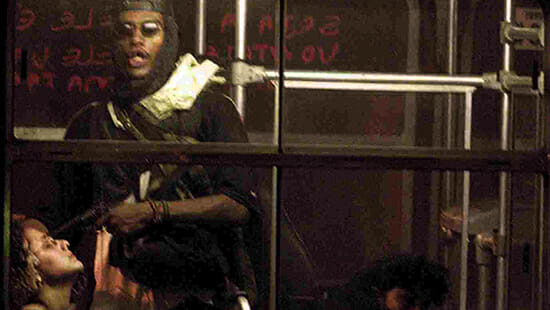
On July 12, 2000, a young homeless man named Sando took hostage a bus carrying 11 people on a busy Rio de Janeiro street. Because of the police force’s ineptitude, the area around the bus was never secured and TV reporters were able to place their cameras within just a few yards, broadcasting the entire ordeal live.
Bus 174 wants to be more than just an account of a hostage drama, exploring the class issues that eventually steered the young man toward crisis, as well as why the police had such a difficult time resolving it. Though the movie is more sympathetic to the gunman than some viewers might appreciate, look only to its opening helicopter shot, which tracks the bus’s normal route, highlights the enormous division in Rio. By situating a hostage drama within a larger socioeconomic setting, Bus 174 forces the audience to see the story as so much more than just a spectacle. —J. Robert Parks
88. Helvetica
Director: Gary Hustwit
Year: 2007

What’s in a font? Gary Hustwit examines the go-to typeface, now almost 60 years old, in this fascinating look at graphic design and its effects on sensory-overloaded consumers. Along with an inherent self-awareness comes a po-mo debate about aesthetics and global impact, from corporate and pop culture to the warfront. Lest we take for granted the efficiency of the images we encounter every waking minute, Helvetica probes the reasons for its namesake’s ubiquity, as well as the psychology and politics behind its multi-purpose appeal. Straightforward, agreeable and with few stylistic frills, the film—the first in a “design” trilogy including Objectified and Urbanized—echoes its subject. (Full disclosure: The above was originally written in Arial. Cough.) -A.S.
87. Brooklyn Castle
Director: Katie Dellamaggiore
Year: 2012

The premise behind Brooklyn Castle is the stuff of soppy, Oscar-baiting drama: At I.S. 138 in Brooklyn, New York, a competitive chess program has helped an extraordinary number of lower-income inner city students improve their standings in life. Which makes the triumphs and failures of these kids all the more biting. More than just a run through a delightful roster of vibrant young people, Brooklyn Castle is as much about the struggles of public schools with funding and the suffering extracurricular world of your typical student. It’s is a timely cry for help from a broken educational system. —Dan Schindel
86. How to Survive a Plague
Directors: David France
Year: 2012
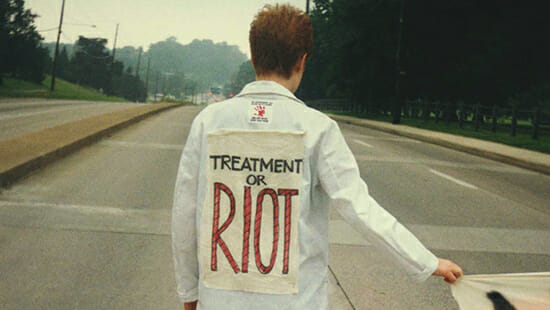
A New York journalist who has covered the AIDS epidemic for 30 years, first-time filmmaker David France has assembled both a superbly researched record of the decade-long fight for a viable treatment protocol and an intimate portrait of the personalities leading the charge. Serendipitously, the arrival of HIV coincided with the availability of consumer-grade camcorders, and as a result, much of this developing story—from private conversations to public protests—was recorded for posterity. France combines this historic footage, courtesy of more than 30 videographers, with archival news reports and present-day interviews to craft a complete picture of the founding, mission, strategies, in-fighting, splintering, failures and successes of ACT UP, a Greenwich Village-based protest group that forced government agencies and health organizations to take AIDS seriously and invest in finding a cure.
Yet, by the time this story ends in 1996, with the development of a combination drug therapy that actually works, 8.2 million people had died. How to Survive is indeed a tale of survival, but the AIDS community didn’t get there without a fight—and a steep personal toll. —Annlee Ellingson
85. Born into Brothels
Directors: Zana Briski, Ross Kauffman
Year: 2004
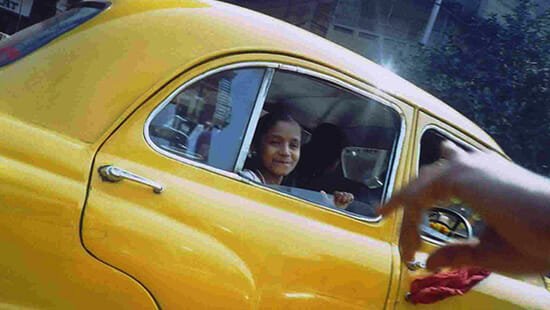
Zana Briski was working as a documentary photographer in Calcutta when she began teaching photography to the children of prostitutes. The resulting film, Born into Brothels, though not without controversy, offered a glimpse into the difficult lives of the kids who were finally given a medium and a voice to document their lives. Briski’s continued Kids With Cameras project offers hope and a path for some of these children to find new opportunities outside the brothels, but there’s no candy-coating the difficulties facing them, even once they’ve headed off to school. If the documentary form has any sort of social-shaking effect, in Born into Brothels the form finds its most welcome, most populist purpose. —Josh Jackson
84. Waltz with Bashir
Director: Ari Folman
Year: 2008
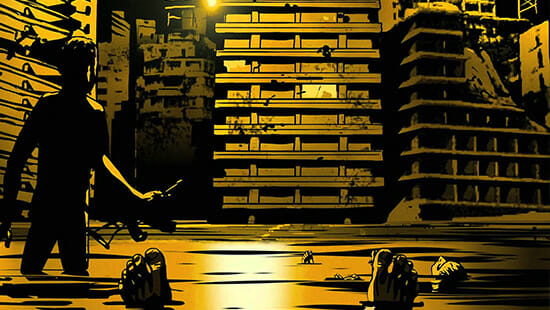
As much about memory’s hallucinatory inventions as the facts of the 1982 massacre at a Palestinian refugee camp in Beirut by the so-called Phalangist Christian militia, Ari Folman’s animated Waltz with Bashir begins with 26 barking dogs rushing through a city—from there, the emotion builds, relentlessly. Though Folman, a veteran Israeli documentarian, calls Bashir a documentary based on the interviews at its core (mostly with fellow soldiers), his cameras go places the handiest cinematographer could never venture: Beams of light bend between branches during a forest battle; and the dream images of men rising naked from the sea—while balls of fire fall from the sky—are just as real as the chasm-like blank spots in Folman’s mind as he reconstructs his mission into Lebanon. Powerful beyond a doubt, especially during a fourth-wall shattering climax, Waltz with Bashir borrows the visually manifest mind games of Richard Linklater’s Waking Life or A Scanner Darkly and dances them to the deep end. —Jesse Jarnow
83. Dark Days
Director: Marc Singer
Year: 2000
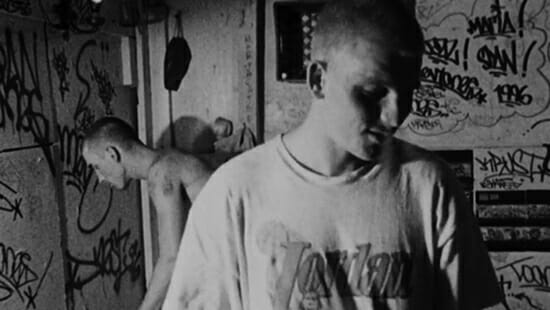
Marc Singer never intended to be a filmmaker when he befriended a few groups from New York’s homeless community; he never intended to move in for a few months with the denizens of the Freedom Tunnel when he became so close them. And he never intended a documentary, crewed by its own subjects, as anything more than a way to financially help those same subjects. Yet, despite Singer’s less-than-artistic origins, Dark Days rings with unmitigated sincerity—so immersive as to be practically claustrophobic, capturing in stark chiaroscuro a world suffocating beneath the City. It’s rare that a documentary feels almost too up close and personal. —D.S.
82. The Imposter
Director: Burt Layton
Year: 2013
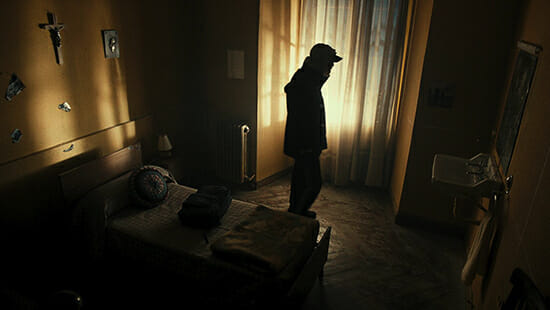
From the beginning, it’s obvious The Imposter is going to be a thriller—which it is, and then some. Three years after the disappearance of their 13-year-old son, a Texas family receive word he’s been found in Spain. When they go to pick him up, they’re so desperate to believe he’s alive that they don’t even notice that the “boy” is actually a French man in his mid-twenties. Is it a monumental case of grief and hope blinding sense, or is there a darker explanation? Director Bart Layton mixes elements of documentary and narrative filmmaking seamlessly, uncovering in each and every character he encounters more of a treasure trove of odd nonfiction than the last, crafting endlessly compelling portraits of people willing to push their lies to obsessive, and ultimately sad, extremes. —M.D.
81. 12 O’Clock Boys
Directors: Lotfy Nathan
Year: 2013

An elegant mix between a scrappy visual bildungsroman of a 13-year-old Baltimore youth and a cursory glance at the dirt-bike and four-wheeler culture that’s risen to near legendary status in the city, 12 O’Clock Boys is a gorgeously shot testament to the social climate that has made Baltimore such a focus for racial and institutional tension in the past two weeks. But don’t dare compare this to The Wire—Nathan’s documentary is almost totally removed from any particular time. Instead, it’s concerned more with the quotidian, how the City’s youth live for their bikes, for the thrill of testing their physical limits, for the freedom and personality such machines afford them in a place that rarely allows them to ever express the same. Baltimore’s problems have been indelible to its personality for so long, and yet, as embraced by Pug—our protagonist, the boy who obsesses over joining the 12 O’Clock Boys, Baltimore’s so-called biker gang—the City is a complex web of thoroughfares and blank slates ready to be etched into stone by anyone with a motor and a death wish. Between goose-pimply vignettes of the 12 O’Clock boys posturing for the camera—popping wheelies and grinning wildly—and sobering passages in which Pug’s family (and friends) face one tragedy after another, the film is moored to the foundation of Pug’s dream: That one day he too will be legend. —D.S.
80. Jiro Dreams of Sushi
Directors: David Gelb
Year: 2012

Jiro Dreams of Sushi is about one of the greatest masters of the culinary world, one of whom casual foodies have never even heard. Although Jiro’s work—literally, the dishes he so effortlessly prepares, and then the act of watching him as he watches his customers eating the dishes—is ostensibly the film’s focus, the story is truly propelled by the chef’s relationship with his two sons: the youngest started his own restaurant, and the oldest, at the age of 50, continues to work with his father, training to one day take over Jiro’s infamous restaurant. Devoid of the typical familial jealousy you may expect (and so devoid, arguably, of much conflict at all), Jiro Dreams of Sushi is only a beautifully filmed documentary about three men who have devoted their lives to the pursuit of perfection. Which in itself is conflict enough, as the film airily asks: Where do style, artistry, practice and perfection meet? —Emily Kirkpatrick
79. National Gallery
Director: Frederick Wiseman
Year: 2014

National Gallery focuses on problem-solving and theory, which prove together to foster a fascinating juxtaposition. On one hand, a museum is a business that has to worry about economics and marketing—but on the other, its mission is grander, connecting us with our cultural, as well as our political, history. But Frederick Wiseman never beats us over the head with these observations: We glean them from the footage he compiles, in which the daily business of running a museum is undertaken with crisp precision.
In this way, National Gallery is itself open to interpretation as much as the paintings on display are. There are far more questions and suggestions in this film than there are firm answers—about the meaning of art or anything else. And in kind, Wiseman (as is his wont) doesn’t show any interest in judging what he sees. As he’s done with several of his recent films, the man lends a sympathetic, slightly detached perspective to National Gallery, portraying a sense of a place, its mission and its struggles. —Tim Grierson
78. The Square
Director: Jehane Noujaim
Year: 2013

Bringing calm insight to an impassioned, still-developing historic event, The Square looks at the 2011 Egyptian Revolution from the perspective of those who were on the frontlines from the very beginning, personalizing the dramatic developments without losing a sense of greater stakes. Director Jehane Noujaim, who previously helmed Control Room and co-directed Startup.com, has delivered a snapshot of a grassroots political movement over its bumpy two-year history, embracing the emotional complexity and logistical obstacles that have made Egyptians’ road to democracy so difficult.
Using no voiceover narration and only a handful of intertitles that inform the viewer about the exact time period of events, The Square seeks to create an urgent, immediate experience that tells its story through the reactions of its main participants. In the West, the scenes of peaceful, joyous protest at Tahrir Square were warmly greeted as hopeful signs of a new Middle East. The Square doesn’t throw cold water on those hopes as much as it meticulously demonstrates that systemic change does not come easily. That’s why you care so deeply about the people you see in this movie—it’s not that their quest is easy but that it’s so very hard. —T.G.
77. Nanook of the North
Director: Robert J. Flaherty
Year: 1922
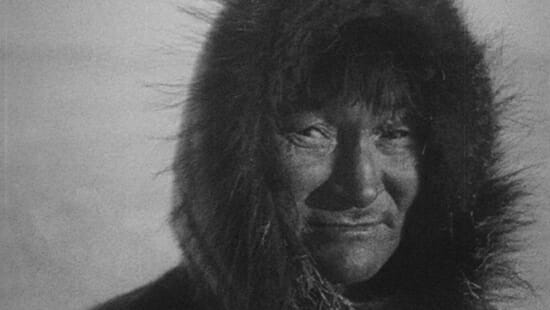
A groundbreaking documentary that isn’t really a documentary, Robert J. Flaherty’s seminal, silent work takes liberties with the life of an Eskimo family in Northern Quebec. As Flaherty follows the Inuk clan, staging scenes, advising his subjects, flat-out fudging details and otherwise ramping up the onscreen drama, he nonetheless manages a remarkably authentic portrait of man vs. nature. The transportive power of cinema is rarely more evident than here, in what afforded the earliest moviegoing audiences a glimpse of a remote existence they’d never experience otherwise. And of course, regardless of its truth, this milestone of verité filmmaking was selected by the Library of Congress for preservation in the U.S. National Film Registry. —A.S.
76. Koyaanisqatsi
Director: Godfrey Reggio
Year: 1982

The first in a trilogy that explores the symbiosis—or lack there of—between humankind, nature and technology, uniformly depicted without dialogue or narration, is a cult film that only within the past year saw a high-definition release. Which is a shame, because Koyaanisqatsi’s visual splendor is not anything that should be digested with less than optimal aesthetic conditions. A cosmically broad, all-encompassing montage of everything from oil fields to mall escalators, from hot dog factories to the demolition of housing projects, from microchip layouts to aerials of arteries of urban planning as it’s seemingly always exited, the film isn’t so much a documentary as it is futurist’s tone poem. After all it is literally about everything, nothing less than the totality of modernity, timelapsed and slo-mo’d and hypercolored to the point of absolute synergy: life as motion as life, forever and ever, amen. —D.S.
75. Life Itself
Director: Steve James
Year: 2014
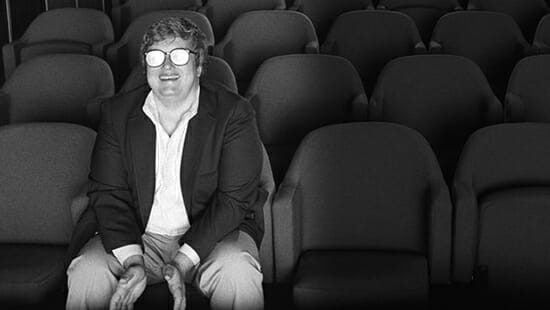
Life Itself may tell the story of a remarkable life, but it’s at its most enlightening when dealing with death. Steve James’s documentary on Roger Ebert naturally chronicles its subject’s exploits, trials and triumphs as he became the most recognizable film critic in the United States. But it weaves his life story around footage shot during the last months of his life, as we see the effect his impairments and mortality have on him and his loved ones.
While the director’s best-known works like Hoop Dreams and The Interrupters mainly use location footage and naturalistic interviews shot by James James himself, the historical segments of Life Itself take on a slick production quality that would be more closely associated with Ken Burns—complete with old photos and archival footage. While the movie jumps around chronologically, its contemporary footage is the pivot on which it all turns.
But James is most at home while working with his own footage, and that’s where the movie really shines. Shooting began a few months before Ebert’s death, but no one knew that the end would come so soon. Ebert had been publicly battling cancer for several years, after all; surgeries and subsequent complications in 2006 left him with no jaw, nearly unrecognizable and unable to eat without tubes or speak without a computer. When James joins him, Ebert is doing even worse after breaking his hip. It’s fitting that Ebert often professed his love for documentaries that unfold in a way the filmmakers couldn’t have predicted when production began. He would have loved this one. —Jeremy Mathews
74. Inside Job
Director: Charles Ferguson
Year: 2010
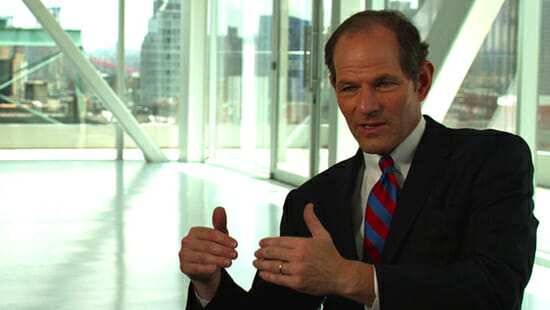
Matt Damon narrates this excoriating exposé of the Powers That Be behind the 2008 financial collapse. Not that we aren’t aware of the corporate machines whose wanton disregard for global consequences precipitated the “completely avoidable” economic devastation—but it’s doubtful we knew the extent of what is essentially fraud and its reach back throughout history. Enter Charles Ferguson’s bracing, exhaustive doc. The Oscar-winning film traces the national hemorrhage from deregulation through credit and housing speculation, “The Bubble” to the ensuing crisis, bailouts, and subsequent attempts at reform. The corollary timeline makes perfect sense, and it’s mind-boggling. Ferguson’s tone, while polemic, is cut by its incredulous humor and sharp pacing. You’ll be pissed, but you’ll also be riveted. —A.S.
73. High School
Director: Frederick Wiseman
Year: 1968

Today, watching High School feels at best like visiting with a curio: Steeped in minutiae and unsurprisingly thorough given the way in which director Frederick Wiseman takes an institutional term as a palimpsest all over which to scrawl meaning and feeling, the film operates as straightforwardly as it seemingly can. But in 1968, the intimacy Wiseman wrenched out of his subjects was practically scandalous—not only was he defining a film movement that to him was filmmaking as a matter of fact, but he was getting much too into the awkward lives of teenagers already burdened with the embarrassment of growing up. And yet, the sentiment that still bears such incriminating weight, all these decades later, is that in High School, Wiseman is leering at these children. It’s uncomfortable, actually: How his camera lingers over dancing girls in rompers, focusing on their butts, on their litheness, on the fact that they have no idea we’re watching. When, later in the film, we sit in on sex education seminars for each of the sexes, wherein abstinence is an ambiguous suggestion and the first dregs of promiscuity peek their pimply noses over the purview of these myopic children, Wiseman’s approach bears the burden of prescience. High school isn’t about learning, it’s about staring: Waiting for those inevitable urges to bubble to the surface, and then exploiting them for all they’re worth. —D.S.
72. Cave of Forgotten Dreams
Director: Werner Herzog
Year: 2010
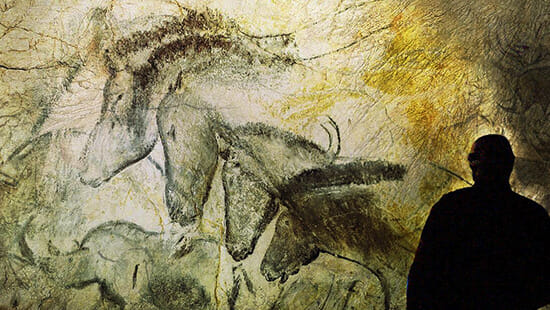
Werner Herzog’s Cave of Forgotten Dreams is the story of humanity’s oldest surviving pieces of artwork: everything they can teach us about ourselves and how we got here. It’s yet another one of those seemingly random yet functionally primordial bits of human minutia that the German director’s imagination so often keys upon, and in this case it yielded one of his most placidly beautiful, intimate films. As Herzog provides minimal narration, drifting with his camera through Chauvet Cave in southern France, the film unfolds rather like an educational movie that one might watch at a museum or informational kiosk at a historical site, except infused with the director’s personal, unflagging sense of wonder. Here, we learn the stories and historical perspective behind the oldest cave paintings on record, estimated at 32,000 years old, the product of some of the first modern human beings in Europe. The walls depict vivid impressions of their surroundings—and in some sense breaches the fabric of their imaginations. The film has that same sleepy, oneiric quality; it’s never in any hurry, and it feels remarkably self-sufficient, thanks to the three-person crew that filmed the entire thing due to French law regarding access to the caves. Herzog himself even worked the lights, in what is also his only 3D film, offering moving, unprecedented, tactile access to a piece of our biological history which the majority of us will never be able to see in even our wildest dreams. —Jim Vorel
71. Man on Wire
Directors: James Marsh
Year: 2005
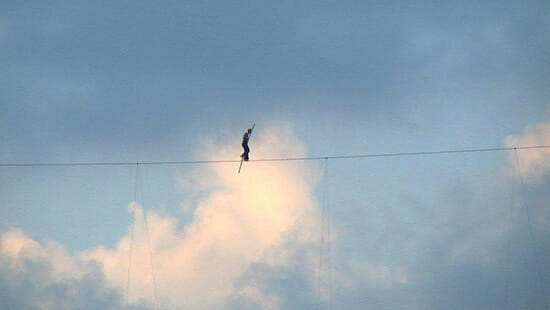
In 1974, high-wire walker Philippe Petit fulfilled a longstanding dream by sneaking into New York’s World Trade Center, stringing a cable between the tops of the two towers, and (with almost unfathomable guts and without a net) walking across it, back and forth, for almost an hour. The man is clearly a nut, but he’s also a great storyteller with a heck of a story, and Man on Wire gives him a chance to tell it. Petit’s stunt was both an engineering challenge and a test of, well, a test of something that most of us don’t possess in this much quantity. Filmmaker James Marsh uses standard documentary techniques, combining new interviews, as well as a satisfying pile of footage and photographs, with re-enactments that both build the kind of suspense more suitable to a caper movie and shade the film’s climactic moment with all due respect for (yet, thankfully, no literal mention of) the visceral symbolism of the two buildings that are no longer there. The title comes from the report written by a police officer on the scene; he was more than a little uncertain about how to respond to the audacity on display. —R.D.
70. Detropia
Directors: Heidi Ewing, Rachel Grady
Year: 2012

Detropia paints a modern likeness of the City of Detroit as the United States’ greatest failure, and perhaps its most representative example of the untenable nature of the so-called American Dream. But the film is rarely as big as it’d like to be. Though there’s something there to dissect about the dissolution of the middle class—how that doesn’t really mean much of anything anymore—directors Heidi Ewing and Rachel Grady can’t seem to get past a melancholic tone and make a serious case about American exceptionalism dooming the rest of the country in the same way. And yet, basic facts are brutal: How in 1955, 1.86 million people lived in the city, but by the time the film was made, there were less than 800,000 people; how there are currently 40 square miles of vacant land within city limits. Detroit is simply too big, and the film struggles underneath that weight. Ewing is from Detroit suburb Farmington Hills, and as someone who also grew up in the area, I recognize sincerity and possessiveness in the way the film chronicles the city’s current plight. Which is maybe why, despite all of the despair and slow-burning nightmares and wreckage it portrays, Detropia ends on a hopeful beat, more of a lullaby than a soundless death throe. It’s quite beautiful. —D.S.
69. F is for Fake
Director: Orson Welles
Year: 1974
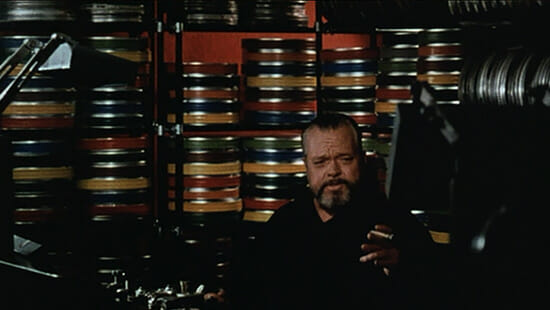
The extent to which you’ll enjoy F is for Fake probably depends on the extent to which you believe a documentary needs to have a point, or stick to that point, or not use the point as a platform from which to grift the audience. The film is half-documentary, half-biography (…of several people at once, including director Orson Welles), and half-excuse for Welles to wear a vampire cape.
It starts as a delightful analysis of authenticity and art centered around art forger Elmyr de Hory. Welles focuses on the question of whether de Hory’s work, as good as it is at mimicking the work of famous artists, is also great art, even if it is faking somebody else’s work. But then the film begins to weave other stories into the mix: for example, de Hory’s biographer, Clifford Irving, was, at some point in the filming process, revealed to have faked a biography of Howard Hughes. Welles plays with the boundaries between truth and fiction, wondering if the very act of replication—in other words, filming people who are either acting as they would anyways or pretending to have feelings—is no different than forging art. F is for Fake is whimsical to the point where it refuses to really answer any of its own questions, but there’s a joy here that’s compelling … even if the whole thing’s a con. —M.A.
68. This Is Not a Film
Directors: Jafar Panahi, Mojtaba Mirtahmasb
Year: 2012
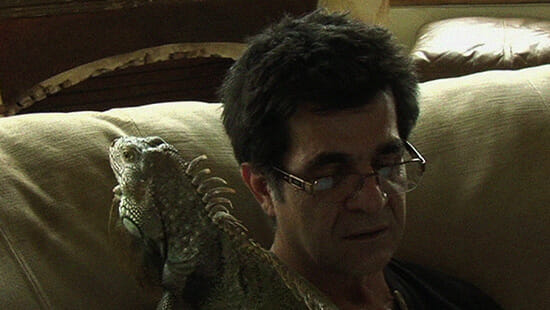
In December 2010, renowned Iranian director Jafar Panahi (Offside) was sentenced to six years in prison and banned from making films for 20. His crime? Supporting the opposition party during Iran’s highly charged 2009 election. Three months later, on the eve of the Iranian New Year, while his wife and children are away delivering gifts, Panahi is home alone in his apartment. He turns on a camera. What follows is a document of the day-to-day life of a man under house arrest: He spreads jam on bread; he brews tea; he feeds his daughter’s pet iguana; he calls his family; he checks in with his lawyer. But This Is Not a Film also evolves into a provocative meditation on the nature of filmmaking itself, because, although he has been barred from directing films, writing screenplays, leaving the country and conducting interviews, Panahi’s sentence says nothing about reading or acting, so this is what he does in front of a camera, explaining what his most recent film would have been about had he been allowed to make it. Like René Magritte’s The Treachery of Images, in which the artist scrawls the words “This is not a pipe” under a painting of just such a smoking device, this is not a film but a representation of one. Which, in fact, might make it all the more truthful. —A.E.
67. At Berkeley
Director: Frederick Wiseman
Year: 2013

Frederick Wiseman is a national treasure, a filmmaker who has spent his career diligently and perceptively documenting institutions, whether they be mental hospitals (Titicut Follies) or French burlesque clubs (Crazy Horse). At Berkeley is one of his best, and one of his longest: a four-hour examination of the University of California at Berkeley that chronicles everything from administrative meetings to classroom lectures. With Wiseman’s trademark restraint—rather than interviewing his subjects, Wiseman simply stands back and observes them in their natural habitat—he asks us to consider the college experience as a microcosm for the world with its warring philosophies and agendas. And if Wiseman’s thesis is accurate, we live in a pretty remarkable world. —T.G.
66. Général Idi Amin Dada: Autoportrait
Director: Barbet Schroeder
Year: 1974

Roger Ebert once criticized this film for not being “a very good documentary.” And it’s absolutely true that this isn’t, at least on the subject of Idi Amin’s three-year rule of Uganda (at the time of filming), or of Uganda itself, or of Amin as a mass murderer. Still, Général Idi Amin Dada: Autoportrait is a fascinating portrait of how Amin saw himself in 1974, and how Amin was a precocious self-mythmaker. Amin’s sense of self is incredible—only three years after the military coup that brought him into power, he displays a level of self-aggrandizement here that simply doesn’t seem possible. That conceit remains consistent throughout, in spite of the fact that most of the scenes in the film that are meant to show off Amin’s power were clearly staged for the benefit of the cameras. So while I do wish director Barbet Schroeder had done more with the film’s offhanded suggestion that Amin is not just the result of colonialism but also a reflection of Western colonial ideology—in context, it comes off more like a half-assed way to address the fact that this film is kind of exploitative than it does an actual argument—in the sense that this is a look at how a mass murderer might present himself to the world, Autoportrait is a compelling study of (in)humanity. —M.A.
65. Actress
Director: Robert Greene
Year: 2014

Robert Greene uses what might be considered sleight of hand with Actress. The director of Kati With an I and Fake It So Real, Greene presents Actress as a portrait of Brandy Burre, an actress whose showiest credit was a recurring role on The Wire. She left her profession behind to focus on motherhood, but now that it’s been a few years, she’s getting the itch to start acting again. This would seem to indicate that Actress will be a look into Burre’s comeback, probably with insights into the struggles of a 30-something actress who’s been out of the game. Except that’s just one facet of Actress, which confidently wanders along with Burre as she begins to make decisions that don’t just affect her career but her home life. The surprises are best not to spoil in Actress, not just because they add to the film’s melancholy spell but because they also enhance Greene’s meditation on role-playing and identity. Those might not have been the filmmaker’s themes when he started, but Burre’s life created the opening, and Greene is smart enough to explore where it leads, serving as a compassionate but clear-eyed witness to her unexpected tribulations. —T.G.
64. Marwencol
Director: Jeff Malmberg
Year: 2010

One night in 2000, Mark Hogencamp was beaten close to death by five men outside of a bar he frequented. No one really knew why it happened; after nine days in a coma, Hogencamp awoke with severe brain damage and little memory of life before. Unable to pay for intensive therapy, he slowly devised a world of his own to reconstruct in place of the one he’d lost: Marwencol, a World-War-II-era Belgian town made from 1/6th scale hobby sets and GI Joe/Barbie dolls, He populated the place with characters transposed from his life as he knew it—himself, friends and the men who attacked him. In order to find reason, and one assumes come to some sort of closure, Hogencamp—charmingly chain-smoking—acts out serialized plots in his little town, meticulously positioning tiny hands or dragging action figure vehicles down back country roads, all the while in thrall to every trivial detail within his control.
Marwencol explores Hogencamp’s imagination as he attempts to rediscover the identity he lost, following the man to New York when his photos of Marwencol are featured in Esopus magazine and shown in an art gallery. The trip proves to be the first time since the accident that Hogencamp’s left his rigorously controlled, excessively private life, and with that director Jeff Malmberg captures him finally getting a grip on the quietly slumbering truths that may have—somehow—brought him to that point. It’s a story rich in awakenings, about the precarious nature of identity and the surprises of spirit awaiting us, somewhere, out of our control, yet held deeply within. —D.S.
63. Stories We Tell
Director: Sarah Polley
Year: 2013
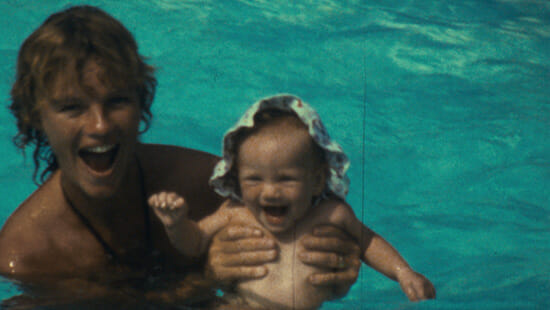
With Stories We Tell, actress-turned-director Sarah Polley has proven herself a consummate filmmaker, transforming an incredible (and incredibly) personal story into a playful yet profound investigation of the nature of storytelling itself. The central mystery to her documentary—that the man she grew up believing to be her dad is not her biological father—is public knowledge at this point, easily revealed in the film’s trailer and associated marketing. Yet Polley conceals and reveals information—starting with her relationships to her interview subjects—in such an effortless way as to constantly surprise, even shock, her audience without leaning into revelations for the sake of them. The result is a film that scrutinizes the ultimate purpose of truth—only to come up with a gorgeously rendered shrug. —A.E.
62. Paris is Burning
Director: Jennie Livingston
Year: 1991

Madonna’s “voguing” phase has nothing on—that is, took everything from—the drag scene of 1980s New York City chronicled in this vibrant doc. Delving into the subculture of fierce, catwalk-styled posing and the clubs in which it thrived, Jennie Livingston depicts the less-than-glamorous realities of life as a drag queen before RuPaul was mainstream: issues of gender and sexual identity, race, bigotry and hate, HIV/AIDS, poverty, crime—theft is a commonplace means by which these would-be “Legends” seek a desired end: transformation. Named after one of the underground balls in which its subjects find a sense of family—in “houses,” no less—Paris is Burning is a joyous affair, and a curiously meta celebration of what it means “to be real.” —A.S.
61. When the Levees Broke: A Requiem in Four Acts
Director: Spike Lee
Year: 2006

Part indictment of FEMA and the U.S. Army Corps of Engineers, part celebration of the unfailingly resilient spirit of New Orleans, Spike Lee’s four-hour-long look at “The City That Care Forgot” a year after the near-obliteration of Hurricane Katrina is an exhausting, comprehensive, worthwhile experience. There’s a reason so many residents refer to the catastrophe as the “Federal flood” and not Katrina itself—Lee’s Peabody-winning doc examines the systemic failure at all levels of government to maintain the storm barriers and deal with the consequences of their negligence. It’s political, it’s racial, it’s accusatory and it’s utterly compelling viewing. It’s also inspiring, thanks to the resolute locals shown struggling to survive and rebuild in the disaster’s aftermath. This is very much a Spike Lee joint; don’t expect anyone in the Dubya administration to come away without a tongue-lashing. But the heart and soul of the doc is the people of New Orleans, and they won’t let you down—on the contrary. —A.S.
60. The Last Waltz
Director: Martin Scorsese
Year: 1978
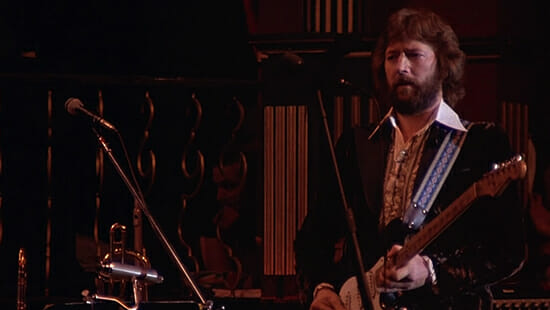
Martin Scorsese’s painstaking attention to detail—particularly in the editing booth here, alongside Jan Roblee and Yeu-Bun Yee—secures this film’s place among the best rock documentaries ever made. A tapestry of American music is interwoven with the farewell concert by roots outfit The Band—who most famously backed Bob Dylan in the 1960s—who invite viewers onstage for an all-star jam with an astonishing lineup of guest players: Dylan himself; Eric Clapton; Muddy Waters; Joni Mitchell; Neil Young; Dr. John; Ringo Starr … for starters. The backstories are rich, the drug use is infamous, the friendships are complicated, but the music remains the thread that binds them all together. Scorsese’s portrait stays true to that, even if, after 16 years on the road, it’s painfully clear these guys need to “take a load off” like whoa. —A.S.
59. Roger & Me
Director: Michael Moore
Year: 1989
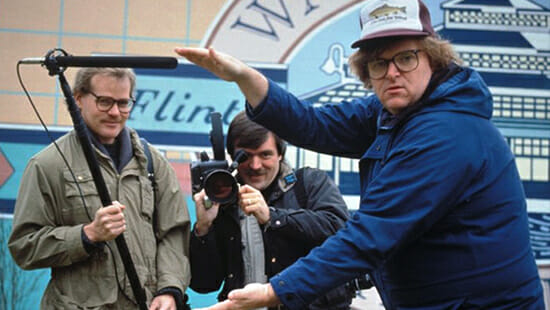
Self-aggrandizing provocateur Michael Moore made a name for himself with this doc, in which he tours his hometown of Flint, Michigan, in the wake of GM’s closure of local factories. As the company outsources labor to Mexico, crippling Flint’s workforce, infrastructure and collective psyche, Moore totes his camera around in search of then CEO and president Roger B. Smith to get answers and, you know, be Michael doing Michael. He poses as a TV reporter to get the word on the (crime-ridden) streets, and then a shareholder to crash a GM convention. His lens encounters a who’s who of visiting conservative personalities (Pat Boone, televangelist Robert Schuller, Ronald Reagan), along with outraged blue collar citizens. It’s a pointed (if highly manipulative) commentary on class and capitalism—and gonzo demagogue Moore at his most tolerable. —A.S.
58. The Overnighters
Director: Jesse Moss
Year: 2014
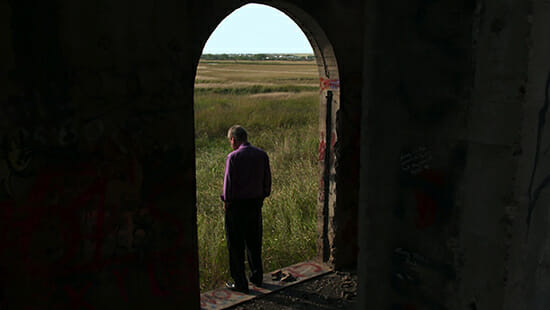
The bulk of The Overnighters is about Williston, ND. It may not be the most happening city in the United States, but it is one of the fastest growing thanks to the controversial fracking boom and subsequent influx of jobs. Thankfully, Moss leaves the fracking debate for other documentaries to handle. In turn, he focuses on the economically challenged men who seek work in the area, and the harsh realities they find instead.
Rather than the instant riches and six-figure salaries afforded a lucky few, scores of job seekers are left to fend for themselves, living out of cars and alienated by a less-than-welcoming community. The notable exception is Lutheran pastor Jay Reinke, who happily throws open the doors of his Williston church with a housing program dubbed “The Overnighters.” Without the consent of his congregation, Reinke invites these desperate pilgrims to make the building their temporary (or semi-permanent) residence. For Reinke, this radical act of charity is simply the Christian thing to do. For many of his parishioners, it’s an uncomfortable intrusion on their spiritual sanctuary—especially when the local paper prints a list of registered sex offenders in the area and a few of those names are Overnighters. One even lives in Reinke’s own home, with the approval of Reinke’s wife and three children.
The experience of The Overnighters is about so much more than just what does or doesn’t drive Reinke. It’s about what’s happening in America right now, how we can have as many abstract discussions about economics, the environment, crime and punishment, and religion as we want, but that these abstract ideas have real impacts on real people. —Geoff Berkshire
57. Land Without Bread
Director: Luis Buñuel
Year: 1933
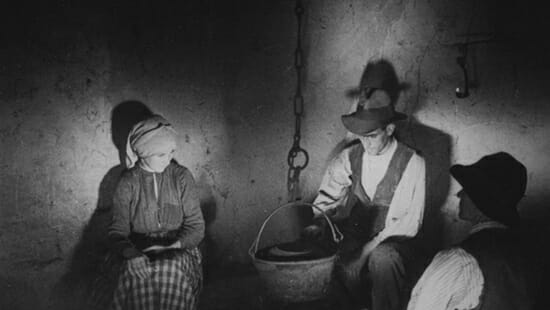
Ever since the Maysles and Frederick Wiseman and D.A. Pennebaker became direct cinema heroes in the 1960s, cinéma vérité has become something of a default method for documentary filmmakers—the less mitigated the experience, the more illuminating the truth. But the further one digs into the form’s origins, the more an ethnography like Luis Buñuel’s Land Without Bread begins to rear its suspiciously exaggerated head. An exploration of the Las Hurdes region in Spain, where inhabitants are steeped in such poverty that the idea of “bread” is alien to them, Buñuel’s account is part travelogue, and part surrealist parody of the kinds of over-exoticized travelogues of the time. In attempting to describe the extent of the region’s scarcity (where one practice is to take in random orphans in order to claim the government welfare that accompanies them), Buñuel spares no brutal detail, setting out to make these peoples’ lives seem as excruciating as possible. Undoubtedly over the top, yet terribly stirring, the film claims that one doesn’t have to look far to find a compelling documentary subject—sadness and devastation can be found right in your backyard. —D.S.
56. King of Kong: A Fistful of Quarters
Director: Seth Gordon
Year: 2007

In Seth Gordon’s feature directorial debut, newcomer Steve Wiebe challenges longtime world-champion Donkey Kong player Billy Mitchell for the highest score in the game’s history. After it becomes obvious that Wiebe may threaten to depose the competitive gaming world’s longtime hero, countless roadblocks are thrown in his path by both Mitchell’s fans and the gaming institution itself. As Wiebe becomes increasingly embroiled in this subculture, he ends up learning ?rsthand about the disturbing lengths people will go to in order to be the best at something, regardless of how silly that something may be. A comedy in the vein of Errol Morris’s earliest documents of humanistic absurdity, the ?lm’s contest is every bit as exciting as anything you’d find in a 30 for 30 ?lm, while shedding light on how obsessions can combine with corrupt power structures to drive otherwise normal people to ridiculous ends. —Sean Gandert
55. Dear Zachary: A Letter to a Son About His Father
Director: Kurt Kuenne
Year: 2008
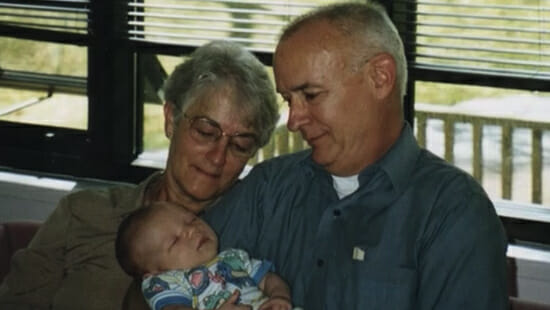
Kurt Kuenne was childhood friends with a man named Andrew Bagby, who, in late 2001, was murdered by ex-girlfriend Shirley Turner. Relieved he’d finally put an end to a turbulent relationship, he had no idea Turner was pregnant. So she killed him, then fled to Newfoundland, where she gave birth to Bagby’s son, Zachary.
This is how Dear Zachary begins: a visual testament to both Andrew Bagby’s life, as well as the enduring hearts of his parents, who, as Kuenne chronicles, moved to Newfoundland after their son’s murder to begin proceedings to gain custody of Zachary. Kuenne only meant the film to be a gift, a love letter to his friend postmarked to Zachary, to allow the baby to one day get to know his father via the many, many people who loved him most. Told in interviews, photos, phone calls, seemingly every piece of detritus from one man’s life, Kuenne’s eulogy is an achingly sad portrait of someone who, in only 28 years, deeply affected the lives of so many people around him.
And then Dear Zachary transforms into something profoundly else. It begins to take on the visual language and tone of an infuriating true-crime account, painstakingly detailing the process by which Bagby’s parents gained custody and then—just as they were beginning to find some semblance of consolation—faced their worst nightmares. The film at times becomes exquisitely painful, but Kuenne has a natural gift for tension and pacing that neither exploits the material nor drags the audience through melodramatic mud. In retrospect, Dear Zachary’s expositional approach may seem a bit cloying, but that’s only because Kuenne is willing to tell a story with all the disconsolate surprise of the tragedy itself. You’re gonna bawl your guts out. —D.S.
54. Citizenfour
Director: Laura Poitras
Year: 2014

Few documentaries have cameras rolling as history is being made. But director Laura Poitras found herself in the middle of momentous times while making Citizenfour, which takes us behind the scenes as NSA whistleblower Edward Snowden works with (among others) journalist Glenn Greenwald to expose the organization’s systematic surveillance of everyday Americans. From the worried initial meetings in a Hong Kong hotel room to the later fallout across the globe, Citizenfour has the rush of a thriller, humanizing its subjects so that we see the uncertainty and anxiety coursing through them—along with the guts and indignation. —T.G.
53. Taxi to the Dark Side
Director: Alex Gibney
Year: 2007
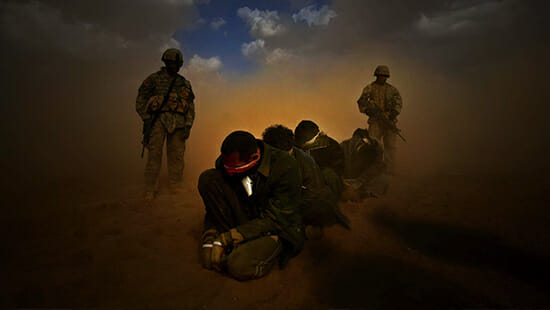
A shade overshadowed by controversy surrounding the film’s distribution and promotion, Taxi to the Dark Side is still a punishing document of American imperialism—both a product and condemnation of the democratic system that’s failed us for so long. Part post-9/11 discourse on torture and those who facilitate it for a so-called greater good, and part slowly simmering nightmare, Gibney’s film draws out a labyrinth of bureaucracy only slightly less enraging than the feeling of sitting there, watching this documentary, knowing there’s pretty much nothing you can do. This is the way the world ends—not with a bang but with the whimper of a man being tortured to death. —D.S.
52. Welfare
Director: Frederick Wiseman
Year: 1975

An unholy mess of dog-eared government forms, sad-sack stories of disappeared husbands, suicidal tendencies and public servants with permanently prickly demeanors, Welfare gets in the face of a civil edifice with the same fearlessness and devotion as any other Wiseman joint. For almost three hours, we sit by—sometimes idly, and sometime rapt—in the midst of a welfare office in New York in the middle of the 1970s, listening to applicants and recipients explain their cases to (mostly) deadpan employees. We’re exposed to the many-sorted maladies of a modern urban malaise: psychiatric, educational or racial; due to addiction, bad luck or some sort of institution. Though every story rings with a dull tone of tragedy, in time, all that sound runs together, and the viewer finds relief in white noise. But Welfare’s homogeneity may even be its point—beneath the tedium and repetition of hearing countless people voice one complaint after another, there crouches a harsher truth: If New York is supposed to be a microcosm of our species, then we are a people absolutely brimming with pain. —D.S.
51. Hearts of Darkness
Directors: Fax Bahr, George Hickenlooper, Eleanor Coppola
Year: 1991

There’s no movie industry machine to fault for Francis Ford Coppola’s own personal brand of apocalypse, just the immensity of the production itself—self-financed by the director—and his relentless need to make Apocalypse Now his crowning artistic achievement. This means that Coppola’s surreal Vietnam odyssey, which reached a whopping 265 days of principal photography, was, somewhere in the director’s brilliant, anxiety-riddled mind, his definitive statement on what it took for any human being to make a massive piece of art like Apocalypse Now. The experience was, as he tells a crowd at the very beginning of the making-of doc Hearts of Darkness, not about the Vietnam War; it was the Vietnam War.
Far from an exaggeration, Hearts of Darkness spends 90 minutes defending that initial statement, and after millions of dollars, a heart attack, a number of psychological collapses, serious drug abuse, a rebellion in the Philippines, threats of suicide, and endless rewrites to John Milius’s almost-legendary script, the audience might be hard-pressed to disagree with Coppola’s assessment. In fact, one wonders—along with practically everyone involved—if Apocalypse Now was even worth the trouble, despite a respectable awards showing and suitable box-office returns. Because at the heart of all that turmoil was an impenetrable something that Coppola spent nearly a year trying to find. In the end, just like in the Joseph Conrad novel upon which the film was based, it’s hard to tell if Coppola ever found what he was looking for. —D.S.
50. Calcutta
Director: Louis Malle
Year: 1969
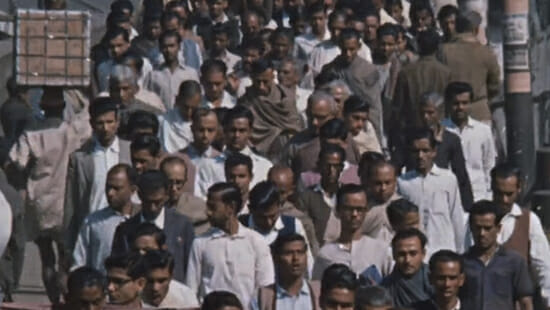
Calcutta is a confounding, compulsively rewatchable documentary—probably the closest thing we’ll ever get to a cinematic Where’s Waldo book. Louis Malle and his camera seemingly leave no crevice of the Indian city un-glimpsed, rarely commenting, and almost wholly observing, stepping gingerly through the slums or weaving helplessly through traffic, as if the full truth of a metropolitan area of 8 million people could be documented only through comprehensive coverage—as if success in Malle’s mind is measured in the sheer amount of ground one camera can touch. Malle breaks his silence at one point to inform us that projections see the population rising to 20 million by 1990; that never happened, but under the oppressive bulk of that possibility Calcutta shudders. —D.S.
49. The War Game
Director: Peter Watkins
Year: 1967
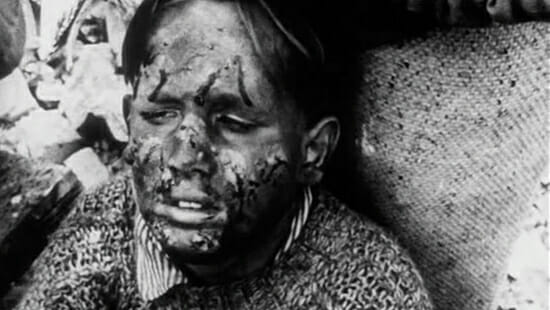
In the final moments of this film, a child, dripping with blood and coated in ash, says, “I don’t want to grow up to be nothing.”
Based on interviews with leading professionals, extensive research and a heady dose of well-educated speculation, Peter Watkins’ The War Game exists in a sort of interstitial reality between documentary and drama. Using mostly non-actors to portray Watkins’ estimation of what a nuclear holocaust in the UK would be like, the film conjures up an alternate reality in which an unsuspecting population freefalls into total annihilation. What’s scarier than the images Watkins depicts of people burning alive or of a riot erupting in the midst of the desperate institution of martial law—all (obviously) dramatized but all very difficult to watch—is also one of the film’s most trenchant truths: the lack of awareness most citizens have of the devastation our elected leaders have at their disposal. If we became suddenly aware that our future generations could grow up to be nothing—to mean nothing in the grand scheme of things—we’d have no idea how to prevent it. —D.S.
48. Little Dieter Needs to Fly
Director: Werner Herzog
Year: 1997

The story of former fighter pilot Dieter Dengler, told in his own words, is one that, while pretty unbelievable, best illustrates the mastery manipulation of the man helping tell it. Werner Herzog makes no apologies for the way he so often bends truth to more snugly serve the grandeur he finds in the subjects he chooses for his documentaries—but he’s never been interested in unadulterated truth anyway. Instead, he’s in the documentary game for the exultation of truth, conveying it in such a way as to focus on the overpowering emotions at its core. And so, in Little Dieter Needs to Fly, Herzog takes Dengler back to Southeast Asia, where, in the early days of the Vietnam War, he was shot down and taken prisoner, tortured and starved—but then, somewhere within him, found the will to escape. Dengler leads us step by step through this harrowing experience, accompanied by locals who Herzog hired to help Dengler “reenact” the events, and in a sense help him remember.
That Herzog later went on to make a narrative feature based on Dengler’s story isn’t at all surprising—Rescue Dawn, starring Christian Bale in the lead role, walks a fine line between harsh reality and patriotic melodrama. Because, as Herzog told Paste more than eight years ago:
“Rescue Dawn is not a war movie. It’s a ?lm about the test and trial of men … And survival.”
It doesn’t necessarily matter how Dengler escaped, but that he was able to at all. Whatever you want to call it, it was that titular “need” that propelled him onward—and that’s the truth Herzog wants to discover. —D.S.
47. Exit Through the Gift Shop
Director: Banksy
Year: 2010

When renowned graffiti artist Banksy took the camera away from Thierry Guetta, the man shooting his biopic, and decided that the subject would become the documentarian (and the documentarian, the subject), an incomparably zany (and very, very funny) documentary was born. Against all odds, Mr. Brainwash, as Guetta christens himself, puts on the largest and most profitable street art exhibition in history.
The film never quite takes a side on the Warholian question of whether Guetta/Mr. Brainwash is actually a legitimate artist or has merely convinced enough people that he is—or whether those are one and the same, or whether it even matters. But the most compelling theme of the film is its cinematic exploration of Heisenberg’s Uncertainty Principle: That a phenomenon cannot be observed or measured without simultaneously changing it. Guetta never puts spray can to wood until he’s being documented by Banksy. Does that mean Banksy made him what he is? Destroyed, in some sense, what he was? And is that good or bad, or neither? Banksy’s not saying. —M.D.
46. From the East
Director: Chantal Akerman
Year: 1993
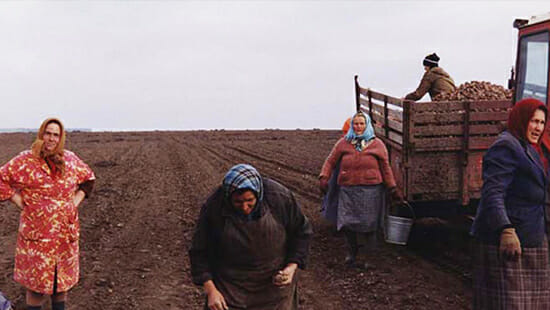
Chantal Akerman once said, “In my films I follow an opposite trajectory to that of the makers of political films … They have a skeleton, an idea and then they put on flesh: I have in the first place the flesh, the skeleton appears later.” So goes the corporeal nature of From the East, in which Akerman travels to East Germany, and then Moscow, shortly after the institution of perestroika. Her vignettes, devoid of context and explanation, are as rich as they are varied: peasants planting crops, people preparing dinner, streets ever-thickening with snow, someone listening to music—each calmly documented, without any noticeable agenda. Akerman’s intent could be practically anything—a visual reconstruction of the Soviet deconstruction perhaps, or an exploration of the museum of communism, limned in ruin—which seems to be her only intent. And yet, as we watch people waiting, as we watch people reminiscing, as we watch people stand between monoliths and silhouettes, the whole film conjures up an ineffable atmosphere of nostalgia—what these people are nostalgic for is left to us to imagine. —D.S.
45. Crumb
Director: Terry Zwigoff
Year: 1995
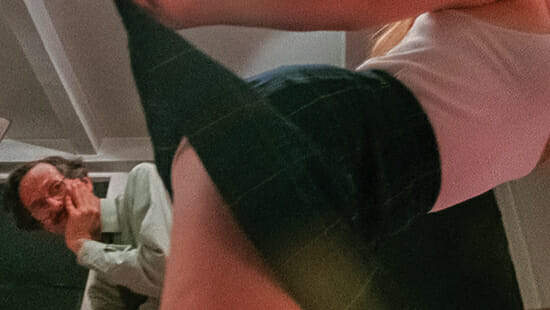
Robert Crumb, one of the most controversial cartoon artists of the late ’60s and ’80s, continues to impress his fans with his eccentric persona and borderline gross perspectives even today. Starting his own Zap Comix in 1968—printed by filmmaker and Beat writer Charles Plymell—he’s since dedicated his time to creating his own work (notably, Fritz the Cat). He also managed to merge his passion for music with his illustrations, as can be seen in the book R. Crumb—The Complete Record Cover Collection, in which you can enjoy his artwork for bands like Big Brother & The Holding Company, Blind Boy Fuller and of course his own musical formation, R. Crumb and his Cheap Suit Serenades. Crumb tends to mix his own personal fetishes and obvious sexual preferences into his work without ever losing face with Freudian clichés.
Anyone who has ever studied his comics and other illustrations must have noted that this is not just a man who is evidently hung up on some satirically sexual identification with his characters—derived squealing from his Id—but a man who must depend upon his privacy. A documentary about himself and the people closest to him … Who could be trusted enough to be granted such an intimate insight into his family? There was only one man for the job: friend and fellow cheap suit Terry Zwigoff, who ended up spending nine years on this project. Crumb might make you blush uncontrollably at times—it will definitely leave you with a bit of a gabble in your throat—but as a piece of totally DIY insight into artistic genius, it’s achingly personal. —Roxanne Sancto
44. Lessons of Darkness
Director: Werner Herzog
Year: 1992
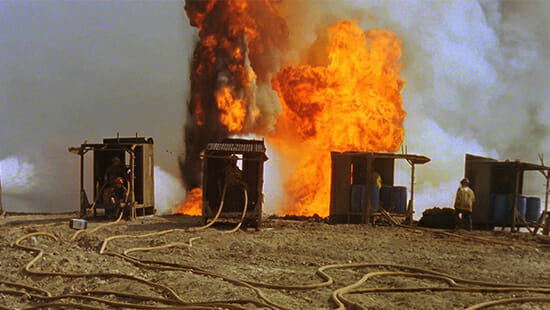
“The collapse of the stellar universe will occur—like creation—in grandiose splendor.” — Blaise Pascal
With this quote Lessons of Darkness begins, and so it approaches the aftermath of the Gulf War from the perspective of an alien observer—not so much from another world as functionally from a different dimension, removed and slightly off, then suddenly thrust back into a reality, our reality, brimming with violence and fire. The images to which Herzog lays himself interminably bare are able to be viscerally understood, because they are grandiose: towering, apocalyptic and past the point of logistical comprehension. Every Herzog film comes with at least one near iconic image—an infant desperately gripping an immigrant’s finger; a marching line of slaves down a mountainside; a dwarf laughing himself to death; an infinite vista of windmills—and Lessons of Darkness is no different. Though, it could be said that the whole film is one of those images, a meditation on the glamor of devastation: It’s the logical sequel to Herzog’s Fata Morgana, but even more gorgeous, because there’s probably no more thrilling and unadulterated vision of the sheer cataclysm of the human condition than an oil field—burning until the end of time. —D. S.
43. Muscle Shoals
Director: Greg “Freddy” Camalier
Year: 2013
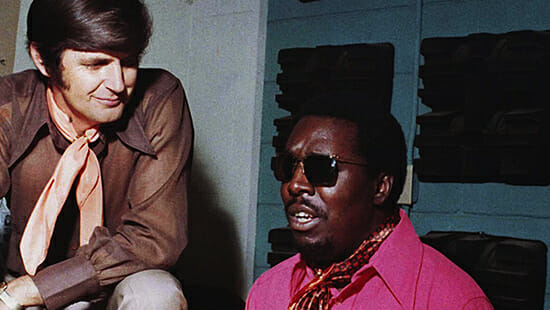
Freddy Camalier’s masterly Muscle Shoals is about the beginnings and then the heyday of the recording scene in Muscle Shoals, Alabama, a tiny town that improbably changed the face of rock’n’roll forever. First-timer Camalier is obviously a natural storyteller, but there’s so much more to the doc than promise—the cinematography is lush and beautiful, the editing is crisp and precise, and it’s in turns heartbreaking, inspiring, wry, thought-provoking, nostalgic and genuinely funny. It’s simply a stunning debut film.
It helps that Camalier and his producing partner Stephen Badger are after more than just a lesson in musical history: They delve into the Civil Rights Movement and its effect specifically on Alabama, especially as it relates to a Muscle Shoals music scene that was, shockingly enough, lacking in any racial tension. They return again and again to the ancient Native American legend about the river that flows through the town, and the water spirit who lived there, sang songs and protected the town. Not to mention that the personal life of Fame Records founder Rick Hall, the protagonist of the film, is itself worthy of a Faulkner novel. Muscle Shoals is thrilling, it’s engaging, it’s fascinating, it’s stirring, it’s epic—whether you’re a music lover or not. —M.D.
42. Harlan County, USA
Director: Barbara Kopple
Year: 1976
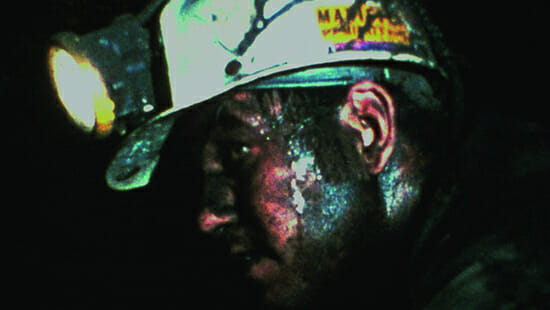
Years in the making, Barbara Kopple’s Oscar-winning Harlan County, USA joins the families standing behind the miners’ strike against the Duke Power Company at the Brookside Mine in Kentucky, which started in 1972. Though in itself, the film is near heedless examination of the ever-shifting relationships between labor unions and the corporations almost preternaturally bent on dismantling them—not to mention the unsustainable reality of small towns centered wholly around one company (see also: Roger & Me)—what’s perhaps most transgressive about Kopple’s film is the way in which her presence, and that of her crew, steered the course of the documentary’s events. When Duke hired armed guards to accompany scabs into the mines, Kopple infamously claimed that her cameras kept inevitable violence at bay—as well possibly contributing to, among other circumstances, the revelation that former union president Tony Boyle contributed money to the murder of well-loved presidential candidate Joseph Yablonski, who was found, with his whole family, dead in their home not long after the elections (which were also pretty obviously considered corrupt). What began as a documentary about union members’ attempts to unseat Boyle grew to a film about the injustice at the heart of unchecked capitalism. In that evolution Kopple proved that for some of the best documentaries, the value is in the journey, rarely in the destination. —D.S.
41. Gimme Shelter
Directors: Albert Maysles, David Maysles, Charlotte Zwerin
Year: 1970

The December 1969 killing of Meredith Hunter at a Rolling Stones concert happened, was reported on and was commented on by this very documentary in the space of a year. A duration made to seem even shorter, perhaps, since Gimme Shelter was only the second film about the Rolling Stones that turned out to be less about the Rolling Stones and more about The End of the 1960s—the first being Jean-Luc Goddard’s One Plus One (1968). But duration makes this film important: it’s all reaction, tempered by very little perspective. So while Gimme Shelter does tend to play into the tired Baby Boomer narrative that the violence at Altamont was the straw that broke the camel of Woodstock’s back, marking a definitive end to The Hopes and Dreams of the 1960s, its depiction of the Altamont Free Concert as a series of bad decisions that led to bad results is still fascinating. The best reaction in the film comes from Jerry Garcia, stoned out of his mind and clearly only half-understanding the news that the ad hoc security at the event, the Hell’s Angels, were beating people in the crowd. He blinks, slowly, and simply drawls, “Buuummer.”
This should be watched with a critical eye. Hunter’s death is often invoked as a sad footnote that emphasizes how truly awful Altamont was, and Gimme Shelter doesn’t quite correct that—there’s no real attempt to provide character or detail to the man who can be seen sporting a lime green jacket in the crowd, and no sophisticated analysis of the race or class politics of the event or the killing. But even if the Maysles and long-time collaborator Charlotte Zwerin aren’t attempting to answer those important questions, to their credit they provide an awful lot of fascinating footage to be critical about. —M.A.
40. West of the Tracks
Director: Wang Bing
Year: 2003
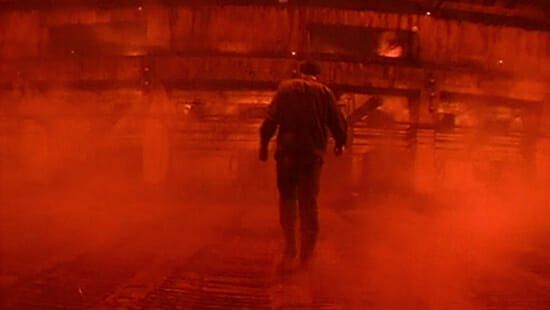
Length is hardly ever a demarcation of where quality begins and ends, but the nine-hour running time of Wang Bing’s excruciatingly measured account of the decay of China’s industrial Tiexi district (in Shenyang) is crucial to truly understanding the region’s fate. Segregated into three parts (the alliteratively blank “Rust,” “Remnants” and “Rails”), West of the Tracks creeps toward oblivion, watching sullenly as the director winnows down his focus—from a group of factory workers caught between disastrous working conditions and idle hours waiting for their livelihoods, and lives to end, down to a boy and his dad who pick through rail yards in order to find raw materials for the emptying factories—attempting somehow to zero in on one reason, one feeling, one reality that could sum up, or at the very least provide consolation for, why life is this way for these people. If you’re able to make it through this meandering spiral, down to its empirical roots, there’s no guarantee you will be rewarded for what you did—there is only the knowledge that you had the endurance to do so. —D.S.
39. In the Year of the Pig
Director: Emile de Antonio
Year: 1968

Consider this a companion piece to Hearts and Minds, a dedicated investigation into the political and social context that somnambulantly found America embroiled in a disastrous war effort during a time when it felt as if America was capable of anything but staying out of the business of others. Sharing a few key interviews and footage with Peter Davis’s film, Antonio’s bleakly atonal documentary expresses nearly identical contempt for the inscrutability of American actions. And yet, In the Year of the Pig is the better glimpse into Vietnamese culture at the time, and so is one side of an equation that Hearts and Minds would rather complete with a film about America—all of it—during the same era. Today, Antonio’s more experimental editing choices feel a little too obvious—especially the sequence in which he pairs “patriotic” music with a blatantly jingoistic recruitment film for anti-communist North Vietnamese—but on the whole In the Year of the Pig is no less incendiary: frank, full of rage and so scrappy it might as well be an introduction to the reality of our supposedly time-tested democracy for every young idealistic American—if such a thing exists anymore. —Dom Sinacola
38. Paradise Lost
Directors: Joe Berlinger, Bruce Sinofsky
Year: 1996
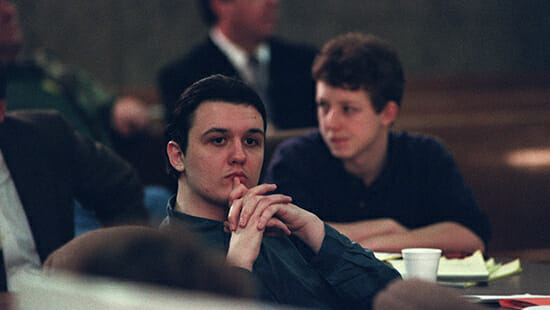
If you’ve never heard of the West Memphis Three, do some research before you begin—you’ll want to be prepared. Within only a minute of the film’s opening, as Metallica’s “Welcome Home (Sanitarium)” noodles forebodingly over pixelated camcorder videos, intolerable images taken straight from police evidence glance across frame, so quickly and frankly you’ll immediately question if they are, in fact, real. Of course, they are—they are images no person should ever have to see, and yet Joe Berlinger and Bruce Sinofsky use them only to expose the unbelievable horror at the heart of the appropriately named Paradise Lost. What unfolds over the following two and a half hours is just as heartbreaking: a trio of teenage boys (one with an IQ of 72) is put to trial for the brutal murders of three prepubescent boys, the only evidence against them a seemingly forced confession by the young kid with the below-average IQ, and laughably circumstantial physical proof. The film explores the context of West Memphis, its blindly devoted Christian populous, and how the fact that these teenagers dressed in black and listened to Metallica somehow led to their predictable fates at the hands of a comprehensively broken justice system. With surprising access to everyone involved in the trial, as well as a deft eye for the subtle exigencies of any criminal case such as this, Paradise Lost is a thorough, infuriating glimpse of the kind of mundane evil that mounts in some of America’s quietest corners. Welcome home. —D.S.
37. Buena Vista Social Club
Director: Wim Wenders
Year: 1999
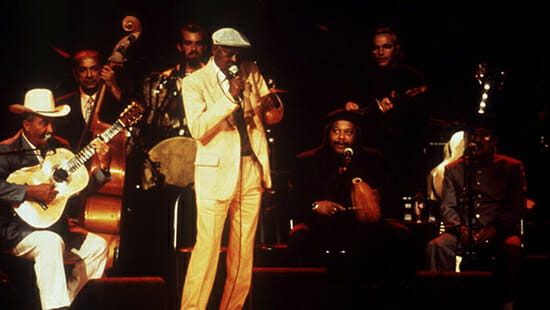
A good 15 years before Obama moved to lift the embargo, Wim Wenders helmed this exuberant introduction to a members club in Havana that closed in the 1940s, only to find worldwide popularity in the 1990s. Wenders’ camera follows his friend, American musician Ry Cooder, as he gets the band of legendary Cuban talents back together for an album and a few transcontinental performances. The soundtrack is, unsurprisingly, exceptional. So too are the individual players and their stories: Take Ibrahim Ferrer, a soft-spoken septuagenarian with a dulcet falsetto, or Omara Portuondo, a soulful chanteuse and dancer who once performed with Nat King Cole. Wenders’ film is more than just a journey of discovery for Cooder and his accompanying son Joachim, or for the group’s members, many of whom had never been to the U.S. (where they sold out Carnegie Hall); it’s the viewer’s passport to an indigenous African-Spanish sound theretofore blockaded by politics. Back in the studio, back in front of a crowd, back with each other, the Club’s members are positively radiant. It’s damned near impossible for audiences to not bask in that warmth. —A.S.
36. Burden of Dreams
Director: Les Blank
Year: 1982
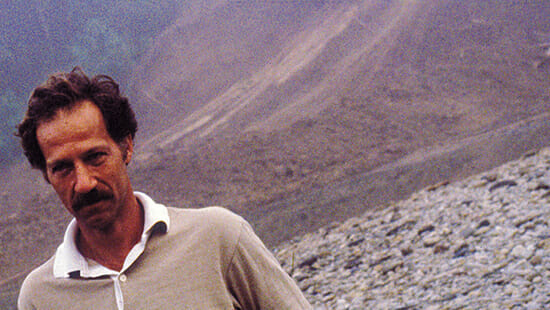
Werner Herzog is no stranger to the ecstatic toil of movie-making, and so it comes as no surprise that one of the greatest films ever filmed about filmmaking is Les Blank’s The Burden of Dreams, a documentary ostensibly about the harrowed making of Herzog’s Fitzcarraldo in the jungles of South America, and really about, like Hearts of Darkness, what an artist is willing to do to wrench his or her vision free from the mind’s morass.
Herzog, an experimental documentarian in his own right, seems to at times toy with Blank, posturing himself as a madman on the brink of a psychotic break, unleashing one bout of intimidating crazy talk after another; years later, Blank admitted as much on his end, claiming that he fussed with the film’s vérité style, asking Herzog, for example, to repeat rants the director once shared off-camera.
Whether Herzog’s playacting or not, his horrific monologues only service the narrative Blank’s building: that sometimes an artistic vision must be seen through, no matter the cost. Whether Blank was instigating drama in the director’s reality or not, Herzog was on board: the audience must understand the seriousness of his vision. And leave it to Herzog to describe such primeval urges in Conquest of the Useless: Reflections from the Making of Fitzcarraldo, the director’s own diary-like chronicle of the production:
“A vision had seized hold of me, like the demented fury of a hound that has sunk its teeth into the leg of a deer carcass and is shaking and tugging at the downed game so frantically that the hunter gives up trying to calm him. It was the vision of a large steamship scaling a hill under its own steam, working its way up a steep slope in the jungle, while above this natural landscape, which shatters the weak and the strong with equal ferocity, soars the voice of Caruso, silencing all the pain and all the voices of the primeval forest and drowning out all birdsong. To be more precise: bird cries, for in this setting, left unfinished and abandoned by God in wrath, the birds do not sing; they shriek in pain, and confused trees tangle with one another like battling Titans, from horizon to horizon, in a steaming creation still being formed. Fog-panting and exhausted they stand in this unreal misery—and I, like a stanza in a poem written in an unknown foreign tongue, am shaken to the core.”
Just try to not imagine that in Herzog’s now infamous voice: the voice of a man at war with the wide world around him—and the voice of a man who may win. —D.S.
35. The Look of Silence
Director: Joshua Oppenheimer
Year: 2015
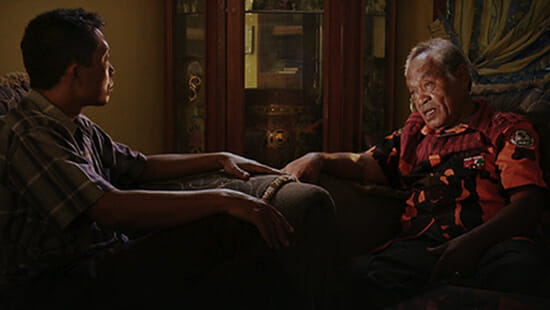
Like The Act of Killing, Joshua Oppenheimer’s companion film—the syntactically similar The Look of Silence—asks you to contemplate the literal meaning behind its title. Again returning to Indonesia, a country languishing in the anti-communist genocides of the 1960s, Oppenheimer this time sets his eye on Adi, a middle-aged optician whose brother was murdered by the men who were the focus of the first film, people today treated as local celebrities. Without question, the film is an interrogation of what it means to watch—as those who led the genocides; as those who are loved ones of those who led the genocides; as those who must repress the anger and humiliation of living beside such people every day; and, most palpably of all, as those of us who are distant observers, left with little choice but to witness such horror in the abstract. As in its predecessor, Oppenheimer’s patience and ability to acquaint himself intimately with the film’s subjects make for one gut-scraping scene after another—the sight of Adi’s 100+ year-old father, especially, is harrowing: blind and senile, the man is abjectly terrified as he scoots around on the floor, flailing and screaming that he’s trapped, having no idea where, or when, he is. Yet, moreso than in The Act of Killing, Oppenheimer here demands our undivided attention, forcing us to confront his quiet, sad documentary with the notion that seeing is more than believing—to see is to bear responsibility for the lives we watch. —D.S.
34. The Fog of War
Director: Errol Morris
Year: 2004
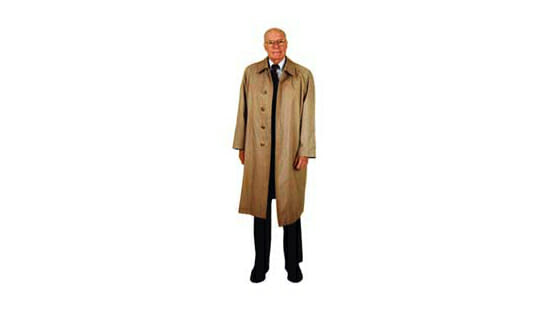
The primary thrust of The Fog of War is a series of interviews Morris did with Robert McNamara, beginning in May 2001 and continuing through the winter of 2002-03. For those who lived through the ’60s, the name Robert McNamara provokes an entire range of emotions and experiences. But even those too young to remember the former U.S. Secretary of Defense will find The Fog of War an incredibly relevant portrait of a man who helped shape the 20th century.
Not enough can be said of Morris’s rhythmic editing style. He’s a master of the subtle use of slow- and fast-motion. It’s reminiscent of Dziga Vertov’s Man with a Movie Camera, one of Morris’s favorite documentaries. The propulsive minimalism of the musical score by Philip Glass perfectly matches Morris’s editing, creating both energy and drive. At other times, it heightens what the director calls the “existential dread” of war, as archival footage from WWII and Vietnam flash on screen.
The Fog of War is principally a movie about war, which is why McNamara’s 13-year reign as the president of the World Bank is unfortunately ignored. However, the film raises enough issues, provokes enough questions and challenges enough assumptions to make it essential viewing. —J. Robert Parks
33. For All Mankind
Director: Al Reinert
Year: 1989

“You recognize that you’re not there because you deserve to be there—that you were just lucky. You were a representative of humanity at that point in history, having that experience, in a sense, for the rest of mankind.”
Al Reinert did mankind a solid by poring over nearly six million feet of film and 80 hours of NASA interviews to piece together an immersive, elegant and above all awe-struck cinematic document of humankind’s first missions to the moon. Laying astronauts’ VO accounts over lunar vistas that even today ply the imagination, For All Mankind is really the only thing Reinert’s known for—though he did write the script for Apollo 13, because duh—and even then he acts more like an expert curator than a director. Yet, there is an intimate, intuitive grace to the voices he chooses, and the quotes he places delicately throughout, splicing the astronauts’ insightful testaments to wonder and the fragility of life with mundane descriptions of how to go pee in space. Plus, having Brian Eno compose an original score for the film was nothing less than a genius decision.
“Already I was getting the impression that this was such an amazing thing, that I’m going to forget these things. And more: I’m going to lose this image; it’s going to be replaced with another. Each image came up, it was there for a flash to be appreciated and savored and then reluctantly let go because you know it’s going to be superimposed with others.”
More than a necessary historical record of our species finally pressing into the incomprehensible beyond, For All Mankind is a searching glimpse into what it’s like to be—on the simplest of levels—in the midst of an experience you desperately want to keep with you forever. Because, for all of the prestige and unbelievable luck attached to their being on such missions, the astronauts in this film are portrayed as uncomplicated, good-natured men—and really only that. In their ordinary lives aboard the shuttle, in the countless hours they spend spinning junk through zero gravity, in the way they pull some dumb fun out of playing the theme from 2001: A Space Odyssey—in all of that Reinert finds a perfect way to portray both the immensity of their accomplishments and the insignificance of so-called “mankind” against the vastness of the universe we’ve only begun to explore. —D.S.
32. American Movie
Director: Chris Smith
Year: 1999
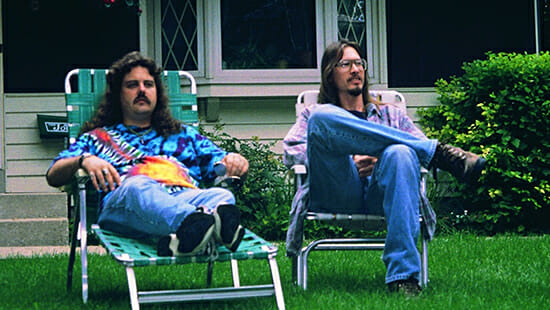
In 1996, Chris Smith joined unknown Wisconsin filmmaker Mark Borchardt as the Midwesterner did everything in his power to finish a little horror film called Coven. The two-year account of Coven’s rigmarole, which Smith deigned to name American Movie, finds Borchardt, a good-hearted but estranged father of three battling his burgeoning alcoholism, obsessed with only one dream: to be a filmmaker. He sees Coven as the gateway to eventually making his real pet project, another film called Northwestern, a film whose success on which he’s seemingly hung his whole adult life. Northwestern of course, and Coven subsequently, represent so much more to Borchardt than a distant ambition or idealistic art project—instead, he’s convinced that the films are his only way to redeem himself after years of personal failings.
As we watch Smith watching Borchardt desperately keep his production going, despite lack of financing, disorganization and poor communication with a meager crew, the title of the documentary becomes ever ominous. “Making movies” in America is a vocation best left for the hardheaded dreamers, Smith implies, and Borchardt is probably out of his depth. But even when Coven inches ever closer to completion, failure is never far from the film’s purview, which leaves us with a heartbreaking question: why do we ever even participate in such a hellacious process as filmmaking? Why do we even make art at all? If the Jodorowskys and Herzogs and Coppolas of the world are the rare kinds of people so obnoxiously headstrong they can survive a process most directors would abandon, maybe they don’t have the noblest of intentions in when it comes to holding the art of filmmaking above the fray. Maybe they just have something to prove. It’s this realization that leaves American Movie so honestly, endlessly heartbreaking. —D.S.
31. Style Wars
Director: Tony Silver
Year: 1983

Affectless and workmanlike, Style Wars takes a surprisingly in-depth snapshot of hip-hop culture in the early ’80s in New York, just as the form was poised to break from street devotion to commercial acclaim. The film elects to focus on the (relatively) least popular elements of hip-hop—namely breakdancing and, especially, graffiti—joining these burgeoning, and young (my god, so young), artists as they navigate the New York underground, trading jargon and insider’s critiques on the art and lifestyle they love, holding no doubt that the work they were conjuring nightly would someday become the stuff of legend. Meanwhile, director Tony Silver stops by mayor Ed Koch’s office to get his smarmy take on what will or won’t deter such hoodlums, and then saunters over to the head of the Metropolitan Transit Authority to hear a voice of sympathy, only to have that voice devolve by film’s end into yet another disciplinary finger-wagging.
Yet, Silver’s best accomplishment isn’t in painting authority figures as the artists’ archnemeses, but instead casting as super-villain that of anonymous graffiti “bomber” Cap, who confesses throughout the documentary that, in so many words, the most beautiful pieces (created by, among others, Seen, Kase2, Dondi and Skeme) deserve to be hastily sprayed over with his haphazard tag. Cap may seem like a monumental jackass—and war room meetings between the City’s other prominent burners reveal as much in their opinions—but his actions are laced with respect, bringing to light the competition and fleeting nature of hip-hop’s earliest manifestations. That a climactic scene involves a few artists already showing their work in hoity-toity art galleries only reinforces the already doomed nature of what they were trying to accomplish: They were literally rewriting, in miraculously constructive and non-violent terms, the rules of an urban jungle they felt no longer had room for them. —D.S.
30. The Times of Harvey Milk
Director: Rob Epstein
Year: 1984
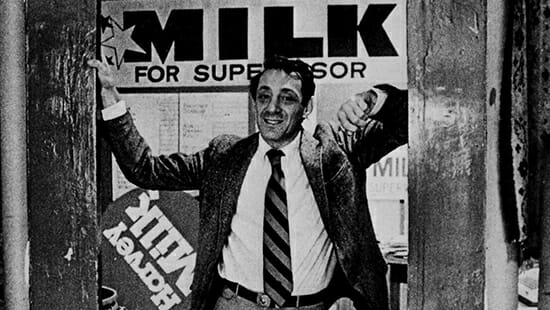
Rarely can one historical figure’s story so saliently capture a point of immense cultural transformation, yet director Rob Epstein’s account of Harvey Milk’s time as a San Francisco City supervisor—which, unbelievably, lasted less than a year before he was assassinated by ex-supervisor Dan White—is in itself a brilliant attempt to manifest Milk’s message, stretching the man’s advocacy for human rights into the sphere of documentary filmmaking with a hope and urgency that the gay rights movement had never experienced before. Paying little attention to Milk’s past, Epstein is frank about the ordinariness of Harvey Milk—so much so that his accomplishments sometimes come off like the work of a lucky man who was in the right place at the right time. Still, he was an incredible speaker with seemingly boundless empathy, a true man of the people, and so his story essentially speaks for itself, so much so that the tragedy of his death makes The Times of Harvey Milk as much a testament to his spirit as it is a compelling true crime dissection of why the United States even today seems so unable to escape the bigotry and hate that’s courted us since the beginning. —D.S.
29. Symbiopsychotaxiplasm: Take One
Director: William Greaves
Year: 1968
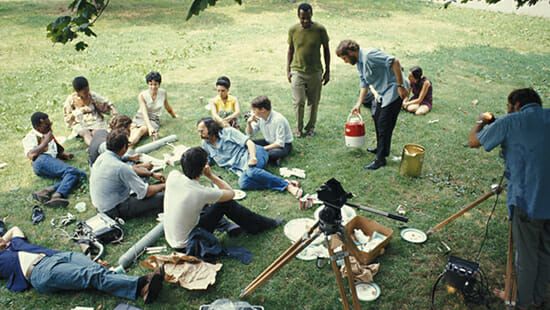
Symbiopsychotaxiplasm meta-weaves three interconnected parts into one unnerving synthesis: 1) a documentary of the casting process for an unmade film called Over a Cliff; 2) a documentary of the documentary of the casting process for an unmade film called Over a Cliff; and 3) a documentary about the documentary of the documentary of the casting process for an unmade film called Over a Cliff, wherein the director of the first documentary also happens to be directing the third documentary to capture additional footage of people in Central Park that has something tangentially to do with “sexuality,” which may or may not be what Over a Cliff is about. That the first documentary seems to be only the repeated filming of different actors having the same offensively tone-deaf conversation is but one point of contention; that the crew can’t seem to possibly grasp what’s going on, let alone get any sort of coherent idea about what they’re supposed to be doing from director Bill Greaves, makes much of the film feel like an inchoate disaster. Which of course compels the crew to gather, apart from Greaves, in a sort of mutiny room to discuss whether they should continue with the production, filming that meeting with full intention of giving the footage to Greaves at the end of whatever it is they’re doing, whenever it is that will happen—all the while debating if, somehow, Greaves orchestrated the whole thing, because there’s no way the audience will know what’s staged and what’s not. And we don’t. So when later Greaves gathers the crew to hear their dissent and then—shutting them down like the genius badass he is—plainly tell them that he did orchestrate all of this, we immediately call into question how easily any kind of film, whether it’s fictional or not, can manipulate our experience of truth—no matter what side of the camera we happen to find ourselves on. —Dom Sinacola
28. When We Were Kings
Director: Leon Gast
Year: 1996

This Oscar-winning look at the October 1974 heavyweight boxing match between champion George Foreman and challenger Muhammad Ali is a thrilling document of not only the hype leading up to the event, but the sociopolitical climate in its host nation, Zaire. The capital city of Kinshasa was essentially operating as a police state, the republic at large under Mobutu Sese Seko’s dictatorship, while the Black Power movement was gaining momentum. So the fight, orchestrated by ever-calculating Don King, was more than a cultural event—it encapsulated a pivotal moment in contemporary Black history. So too does Leon Gast’s electrifying portrait, tracing Ali’s return to the ring after his anti-Vietnam stance cost him his title, and characterizing Foreman’s seemingly undefeatable Olympian. That we know now what was then an unthinkable outcome, and yet are still on the edge of our seats, is Gast’s own triumph. His way with the larger-than-life subjects puts into context just how extraordinary “The Rumble in the Jungle” was, with edits and pacing as sharp as Ali’s left hook. —Amanda Schurr
27. Dont Look Back
Director: D.A. Pennebaker
Year: 1967
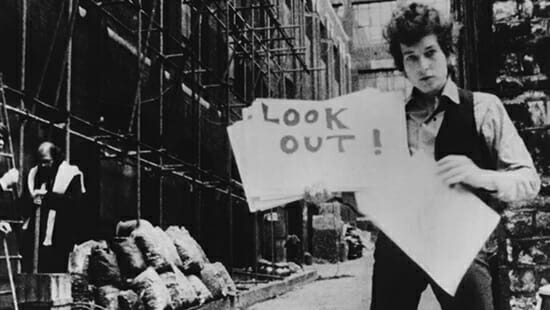
The breakthrough of Primary allowed for a more freewheeling kind of filmmaking, and Pennebaker soon used it to document a U.K. acoustic tour from rising star Bob Dylan. Pennebaker wasn’t a huge Dylan fan—he only knew a song or two—and had no idea that what they made together was, outside of A Hard Day’s Night, destined to be the most significant music movie of the 1960s.
“When I made Dont Look Back with Dylan, we just shook hands,” Pennebaker said in 2011. “It was 50/50 … I think that bond means you will be fair about money, but it also means you’re not making the film just for yourself. You’re making it for the subject because it’s all he’ll ever have of that experience, and it should be as true for him as it is for you.” Far from a disposable fan item, Don’t Look Back is a bracing portrait of an artist colliding headlong with both his growing fame and the confusion of those in the press who don’t know how to approach this mercurial young man—or the generation he represented. Most famous for its iconic, much-parodied non sequitur opening—Dylan flipping white cards with lyrics from “Subterranean Homesick Blues”—Dont Look Back somehow manages to capture the promise of the decade’s counterculture movement, all embodied in a willful little genius who loved tormenting reporters and Donovan with equally bratty gusto.
Explaining the movie’s eternal appeal, Pennebaker used an analogy. “In the ’60s, every kid would buy certain records,” he once explained. “To their parents, the record covers were just pictures. But for [the kids] it was a whole secret symbolic language that told them what kind of dope to smoke, where things were hidden, where to go and all kinds of things they naturally needed to know. Film is one more way you can convey secret information. Dont Look Back provided coded information for people who didn’t want the other generation to know what they were really into. When the older generation looked at it, all they saw was out-of-focus, shaky pictures they weren’t used to.” —T.G.
26. Capturing the Friedmans
Director: Andrew Jarecki
Year: 2003
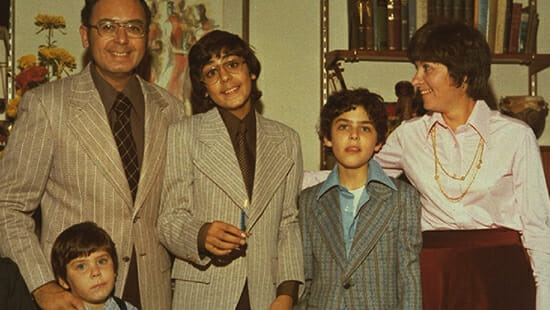
This is the story of Arnold Friedman and his son Jesse, convicted of multiple counts of child molestation that supposedly took place in the basement of their home in a quiet New York suburb during the ’80s. In Capturing the Friedmans, filmmaker Andrew Jarecki interviews the victims and prosecutors, but never reaches a conclusion as to the veracity of the charges, tacitly acknowledging that guilt and innocence are fluid concepts in such sensational and shameful circumstances. Instead, he documents the implosion of the family and the destruction of an already tenuous marriage. Surely, the details of the abuse are disturbing, but almost as unsettling is the cruelty with which the two older Friedmans reject their mother in blind loyalty to their shamefaced father and numb younger brother, further facilitating the family’s emotional separation. —Emily Reimer
25. Primary
Director: Robert Drew
Year: 1960
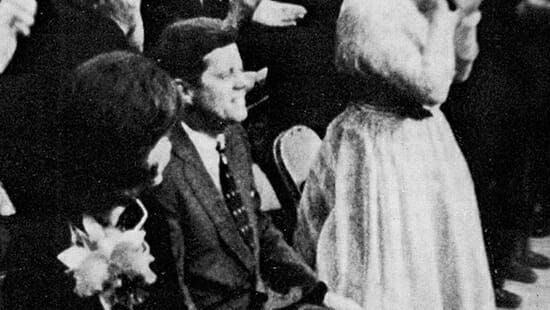
Here begins the stuff of legends: the unheralded celebro-presidency of JFK; the careers of iconic filmmakers D.A. Pennebaker and Albert Maysles; the legacy of a sort of pre-gonzo filmmaking that embedded the audience face-first into the fray of history. While Primary is a relatively quaint hour of man-on-the-street insight into one of the most important elections in American history—capped by a stump speech that illustrates, in a brisk couple minutes, why John F. Kennedy became the figure we now intuitively know him as—the influence this film has is incalculable. From 20/20 to To Catch A Predator, Primary, in following the Wisconsin primary between JFK and Hubert Humphrey, has helped us define that uneasy gray area of our personal politics, giving heft and vitality to the weird feeling we all have in “knowing” the people who we willingly choose to make the most important decisions of our public lives. —D.S.
24. Leviathan
Directors: Véréna Paravel, Lucien Castaing-Taylor
Year: 2013
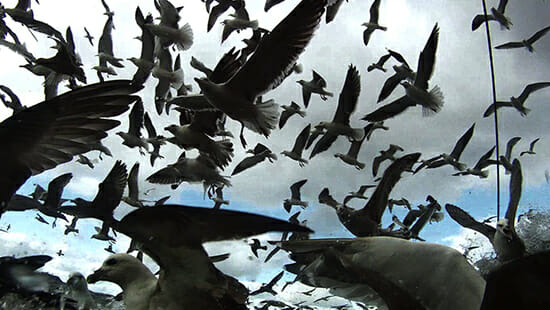
“The film is a gesture, a physical and emotional reaction to our experience, almost like an epileptic crisis or something—an aesthetic translation of what we have been subjected to.” That’s how co-director Véréna Paravel describes her documentary Leviathan, an utterly ravishing and pummeling impressionistic account of life on a high-seas fishing boat. Instead of storylines or talking-head interviews, Paravel and her partner Lucien Castaing-Taylor’s film simply plunges us into the terror and isolation of a brutal, dangerous job, its cameras diving into the ocean or following along as a fish gets caught in the net on its way to being gutted. You don’t learn many facts about commercial fishing from Leviathan, but you leave the film convinced you understand it on a primal, cathartic level—which is how art sometimes works best. —T.G.
23. The Up Series
Directors: Michael Apted (with Paul Almond)
Year: 1964-
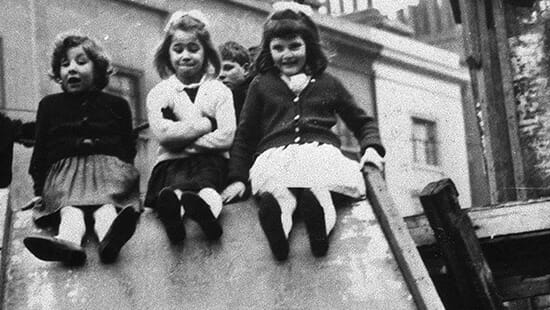
In 1964, a few British filmmakers rounded up a group of 14 seven-year-old kids from across the country—boys and girls, rich and poor, black and white—and interviewed them for a BBC program called Seven Up. At the end of the show, a voice-over commanded that viewers tune back in sometime in the year 2000, when the team would circle back to the kids as adults. But in 1971, at the hands of director Michael Apted, who’d only been a researcher on the first installment, came Seven Plus Seven, which caught up with the kids at age 14 and kicked off what’s now known as The Up Series, which has revisited the same bunch (though with diminishing numbers of participants) every seven years since.
Each subject has a very different story: As time progresses, some live perfectly mundane, uneventful lives; some become homeless or suffer great tragedy; others grow up to be successful, supposedly happy and sometimes even a tad famous. Yet the greatness of this series is how Apted implies, while never obligatorily mentioning, that every person’s life is equally interesting and informative.
Now up to 56 Plus (as of 2013), the glaringly obvious issues with the series are legion: The time spent with each subject is limited to seven days every seven years, so the footage captured is incredibly subjective and can only convey a paltry idea of each person’s reality; or the exploration of each person’s personality consists of a series of banal, intellectually uninspiring questions, mostly limited to matters of career, marriage, family and money. Also, as many of the 56 Up subjects have pointed out, the original series was intended to serve as a class study, one which implied the rich, posh children would grow up to do great things and fulfill their station in life, while those raised in foster homes would offer tales of poverty and sadness. The irony in that, of course, is that so far all of the subjects have grown to prove how wildly inaccurate the show’s original presumptions were. —Rachael Maddux and Emily Kirkpatrick
22. Close-Up
Director: Abbas Kiarostami
Year: 1990
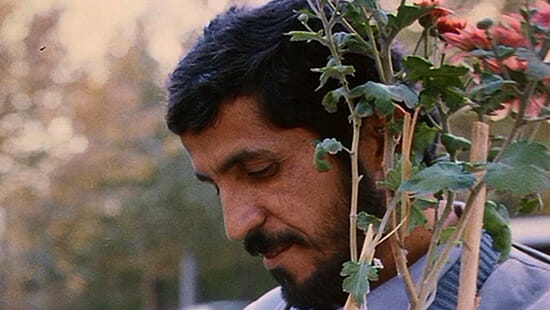
Like the incident at the heart of Close-Up, the film itself is something of a well-intentioned con. Hoping only to clarify, and never exploit, Abbas Kiarostami hybridizes the documentary form, asking the people embroiled in an odd bit of tabloid fodder to play themselves. When we engage with art, Kiarostami asks—truly relate to it—aren’t we making it a part of ourselves? And so, through the story of how an impoverished film buff named Hossein Sabzian took on the identity of Iranian filmmaker Mohsen Makhmalbaf in order to ingratiate himself with the admiration and friendship of an upper-middle-class Tehran family, Kiarostami allows Sabzian to finally make the art he never thought he could. Cultivated via interviews, courtroom scenes and seamlessly integrated retellings in Kiarostami’s own words, Close-Up’s sense of truth and so-called “fraud” is hopelessly blurred. By the film’s conclusion, in which Sabzian’s story comes full circle and he finally meets the real Makhmalbaf, the intentions behind the impostor’s actions may still be unclear, yet the authenticity of his character feels calmly complete. —D.S.
21. Nostalgia for the Light
Director: Patricio Guzmán
Year: 2010
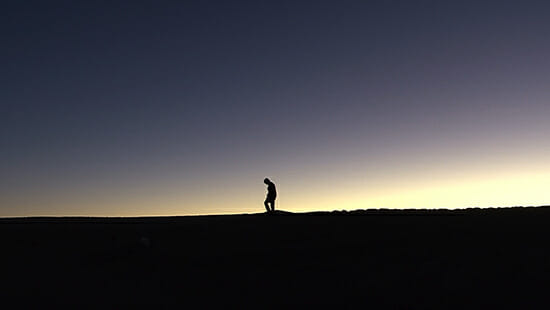
The goal for every great documentary is to, for at least one fleeting moment, glimpse the inconceivable. There’s no hyperbole in that statement, only recognition of ambition—relentless, endless and indelible, borne from some sort of need to find reasons for all of the incomprehensible chaos that surrounds us. And so director Patricio Guzmán created a spellbinding exploration of the Atacama Desert in Chile, where today astronomers from all over the world flock to fulfill their wildest researching dreams. Due to the renowned lack of moisture in the region, star-watching is almost effortless, and Guzmán acknowledges this, citing his own fascination with astronomy at a young age.
But this he takes even further: Astronomers are studying the ancient past, looking for clues to the origin of all reality in the light of galaxies emitted literally millions of years ago, but the Atacama is also perfect for another kind of archaeological excavation. Because of how dry it is, Atacama preserves so much—plant matter, primeval fish, even human remains—and so Guzmán shifts focus to the atrocities committed by the Pinochet dictatorship in the late ’70s and early ’80s, much of which happened in concentration camps located in the desert. And all these years later, a small group of women who lost loved ones to the concentration camps still searches the desert for traces of the old grief they’ve suffered so long.
Guzmán offers no answers to the tragedies befallen the desert and the country—he only attempts to provide consolation through the regularity and awe of the act of searching itself. In that sense, most of the film’s heart is held in long, wandering shots of breathtaking galaxies interspersed with desert vistas, woven together with an almost intuitive grace. And when, in the film’s final moments, he brings these women to state-of-the-art observatories in order to, for once in their lives, look up from the desert floor, Nostalgia for the Light attains something nearly transcendent: the overwhelming feeling that we’re all much too small to matter. —D.S.
20. The Act of Killing
Director: Joshua Oppenheimer
Year: 2013
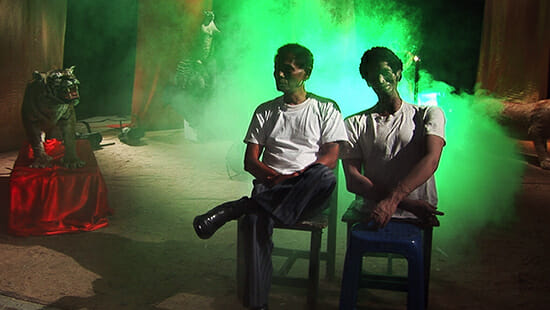
Joshua Oppenheimer’s The Act of Killing focuses on one of the darkest chapters of the 20th century, speaking to some members of the Indonesian death squads who slaughtered hundreds of thousands of their countrymen and women in 1965 and ’66. These people don’t live in the shadows, though—instead they’re treated like royalty in their native land, celebrated as heroes who helped “save” Indonesia from communism. The film is so shocking and depressing that its subjects’ utter disconnection from morality would almost be funny if it wasn’t so frightening. Oppenheimer amplifies those conflicting reactions further by introducing a daring gambit: In the process of interviewing these butchers—who brag about raping and killing their victims (including the occasional beheading)—the director asked if they would be interested in re-creating their murders through fictionalized, filmed scenes. The men—most notably a gentleman named Anwar Congo, who was one of the death squad leaders—leapt at the chance. What follows is a literally nauseous glimpse into the minds of men who have spent decades mentally escaping the inescapable. —T.G.
19. Histoire(s) du cinéma
Director: Jean Luc Godard
Year: 1988

Rather than making a “proper” or “good” film, Godard has always tried to create something that isn’t what we’ve seen before. After first despairing of video—“We have a strong feeling that video has nothing to do with film,” he declared in 1972—he experimented with the form in the mid-’70s with Numéro Deux, a movie about both film financing and members of a family telling their individual stories. He’s even played around with slow-motion in 1980’s stunning Every Man for Himself. But with projects such as Histoire(s) du cinema, he sought nothing less than to tie the history of movies to the history of the 20th century. At four and a half hours long, divided into eight parts, and composed wholly of visual and audio “quotes” from seemingly countless other films, the documentary essay is considered, at the very least, Godard’s densest work, let alone that it represents Godard’s willingness to see the incomprehensible manifest at that impulse’s most obsessive. Some mainstream filmmakers will attempt a change-of-pace movie by shooting with a low budget or no stars. This is seen as “brave” and “risky.” That’s where Godard has always resided.
This makes him a hero, even if it doesn’t make him particularly beloved. The combative, didactic quality of this film, of all of his films, gets him labeled a pretentious misanthrope. Even his most ardent supporters can become exasperated with him. Writing about 2010’s Film Socialisme, which uses nonsensical subtitles and divides its story into three seemingly unconnected segments, Roger Ebert groused, “This film is an affront. It is incoherent, maddening, deliberately opaque and heedless of the ways in which people watch movies.” (Ebert seemed to fall into the same trap he warned others to avoid back in the day. Here’s Ebert in 1969: “The films of Jean-Luc Godard have fascinated and enraged moviegoers for a decade now. The simple fact is: This most brilliant of all modern directors is heartily disliked by a great many people who pay to see his movies.”) Speaking generally about Godard’s oeuvre, David Thompson observed, “He is the first director, the first great director, who does not seem to be a human being.” —T.G.
18. Handsworth Songs
Director: John Akomfrah
Year: 1986

On the bridge between experimentation and journalism, John Akomfrah and the Black Audio Film Collective manage to make a film about racial violence in Birmingham sublime and beautiful. There is deadly serious subject matter and political analysis here, but Handsworth Songs is also a film experience, and one that adapts its aesthetic to the argument at hand.
The documentary isn’t really saying anything about the black diaspora that is revolutionary now, or even at the time it was produced, but it’s the way it says those things that is captivating, knocking together inspirations from free jazz and free improv, the Black Arts Movement, experimental cinema, and 1980s experimental music, crafting a film that is as much about story as it is about making the audience feel the realities of racism. In other words, it’s urgent about the things it says, prompted by the historical backdrop of Margaret Thatcher’s Conservative rule. It foregrounds the idea that sound and culture have political meaning by starkly contrasting the vibrant diversity of various immigrant cultures and individuals of color with the conformity of white authorities. To do this, it employs a variety of film techniques, but while that process is fundamental, the film seamlessly exploits these techniques’ tactics to enhance the film’s analysis of empire, racism and protest. And given the resurgence of anti-immigrant sympathies in Britain today, Handsworth Songs is absolutely worth revisiting as a political statement—but it’s also always worth revisiting as one of the finest examples of how experimental art can enhance an argument. —M.A.
17. Stop Making Sense
Director: Jonathan Demme
Year: 1984

Lester Bangs once wrote an essay about “Heaven,” the Talking Heads song that kicks off Jonathan Demme’s concert film. In it, Bangs fixated on one of David Byrne’s iconic lines: “Heaven is a place where nothing ever really happens.” Heaven, he explained, is—to Byrne’s coke-addled mind—a way of life where all of the stimuli of modern society couldn’t reach him. Couldn’t affect him. Couldn’t whip him up into a frenzy. This, according to both Bangs and Byrne, is truly Nirvana.
Stop Making Sense happened over two nights at the Pantages Theater in 1983, and the second song on the setlist is “Heaven,” set against a bare stage on the cusp of a drastic remodel. From there, the set, as well as the band, builds itself—instruments and writhing bodies and elaborately weird backdrops are added, one upon another, until the stage is absolutely seething with life. And so, not only was Stop Making Sense a document of a legendary band at the height of their powers, but it even today seems like an unheralded synergy of movement and sound, of image and artist—so much so that the band allows us to watch as they destroy, and then re-do, their own idea of Heaven. There hasn’t really been a concert film like it since. —D.S.
16. Salesman
Director: Albert Maysles, David Maysles, Charlotte Zwerin
Year: 1969
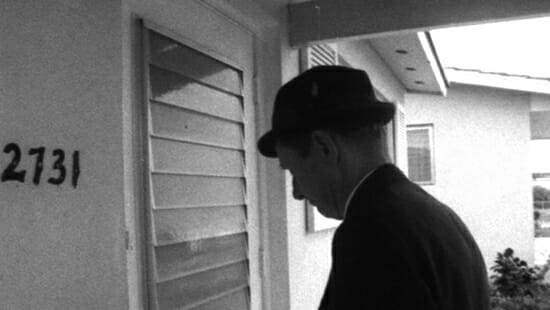
The Maysles’ ode to the can-do attitude of the so-called “Greatest Generation” is an ever-saddening study in charisma: Who has it, what it is and just how deeply, unintentionally ingrained it is in our whole model of the American Dream. In following four Bible salesmen, each with an animalistic nickname to handily keep them apart, we’re able to observe the pitch process from seemingly every persuasive angle. Some salesmen are wise and respectful, others enthusiastic and joking, and still others resort to bullying nervous stay-at-home moms or emasculated husbands into signing a pay stub. Couple that ethical conundrum with the product they’re hocking—the original “Good Book,” apparently—and it’s no surprise when one of the salesmen (Badger, who hits a streak of shitty luck, never living up to his name) loses all hope in his vocation and spends every night in his shared hotel room complaining to his fellow salesmen that what they’re doing is existentially bound to fail. And yet, Rabbit has no trouble keeping his sales up, and the Bull always walks out with scribbled-on chits. Badger just happens to be a dying breed of salesman, a guy whose charisma refuses to adapt. What’s worse: He’s got no one to blame but himself. —D.S.
15. Gates of Heaven
Director: Errol Morris
Year: 1978

In a recent interview with the Criterion Collection regarding the re-release of Gates of Heaven, Errol Morris responded to a criticism often leveled at his work. He said, “To love the absurdity of people is not to ridicule them, it’s to embrace on some level how desperate life is for each and every one of us—including me. If the thought is for a moment that I see myself on a pedestal, on some kind of elevated position with respect to these people who I put in my films … not so. It’s just not so.” We have to trust him. We just do.
The film that famously got Werner Herzog to eat his own shoe, Gates of Heaven is about those who bury their deceased love ones within a pet cemetery, and those who operate it. It’s why Herzog even bet his shoe in the first place: no one ever figured that a film about rich peoples’ dead animals could ever amount to an investigation of mortal purpose.
Morris’s greatest talent is his patience. He’s unwilling, almost down the marrow of his soul, to intrude upon the lives, perspectives and proclamations of the subjects he films. Unlike later entries—like The Fog of War or The Unknown Known—in this, his very first feature, he devotedly keeps himself out of the picture. And so, as his many subjects reflect upon the loyalty of their pets, or the creatures and things they love, or the ways in which their religions account for a dog’s spiritual side, Morris proves he’s one of cinema’s most vital documentarians: He’s a natural-born listener. —D.S.
14. Chronicle of a Summer
Directors: Jean Rouche, Edgar Morin
Year: 1961

In a post-Catfish world, Jean Rouche and Edgar Morin starring in their own documentary film seems almost quaint. But at the time, their questions about the documentary form warranted plenty of investigation: If you stick a camera in a person’s face, doesn’t that violate the truth you’re trying so fervently to free? This they ask by joining their subjects in conversation, attempting to capture France—with all of its political turmoil, social upheaval and artistic transmutation—during the Summer of 1960 in a single cinematic snapshot. And so Chronicle of a Summer joins a Holocaust survivor who attempts to couch her racism towards black people in the context of her own suffering; an African admittedly ignorant of the Holocaust; a factory worker who fully admits to the futility of modern life; and a young couple trusting in love over the hopelessness of their economic situation. There’s no question that the directors fail in their ambitious plan, but they do stumble upon beauty in that failure. By opening up the final act of their film to `a showing of the film they’ve made up until that point—played for a crowd of the subjects starring in the film they’ve made up until that point—they leave themselves totally vulnerable to their own creation destroying them, like Frankenstein’s monster driven berserk by its own reflection. It’s thrilling and sad and infuriating all at once, and it’s documentary filmmaking distilled down to its most essential function. —D.S.
13. The Gleaners & I
Director: Agnès Varda
Year: 2000

There’s an argument that the explicit subject of The Gleaners & I—gleaners, their habits and practices—isn’t nearly as important as the woman at the center of the film, director Agnès Varda. Her place in the film is deliberate—in telling the story of French gleaners, rural and urban scavengers protected by a series of hilariously specific but often debated French laws, Varda is deliberately framing herself as a gleaner, a fellow traveller in a world of thrift-minded men and women who survive on what others throw away. As Varda follows gleaners who comb farmer’s fields for leftover produce and urban landscapes for food and other curiosities, the story mutates into a semi-autobiographical narrative about Varda herself, and the simple pleasures of finding.
I love the film because it pings several intellectual currents in the late 1990s and early 2000s related to the sharing of information and memory thanks to the Internet. The Gleaners & I becomes a lo-fi take on memory, curating, nostalgia and the reframing of discarded cultural detritus, which itself becomes a metaphor for the film’s argument: that the world of poverty might also be reframed, because her exhaustive studies show the spirit of gleaning is strong among people of all walks of life. Varda’s wonderful presence at the center of these discussions makes the film deeply personal and brimming with optimism, but also far more profound than its subject matter might suggest. —M.A.
12. The Sorrow and the Pity
Director: Marcel Ophüls
Year: 1969

With tragedy still stinging, and wounds still fresh across Europe, Marcel Ophüls crafted something of a four-hour harangue about the Vichy government’s collaboration with Nazi Germany during the bulk of World War II. Assembled from interviews with officers, sympathizers, resistance fighters and bystanders—perspectives originating from every angle—The Sorrow and the Pity reveals many excruciating truths about France during the occupation, but none more plangent than the idea that war has no sides, no good guys, no winners. There’s only the sorrow, and then the pity—and everything else is just a series of long, heartsick discussions about right and wrong and how there’s pretty much no difference. —D.S.
11. Man with a Movie Camera
Director: Dziga Vertov
Year: 1929

It definitely isn’t the first documentary ever made, nor was it the first to ever prove that truth could be communicated through less than truthful means (look back to #77 for something closer to the primordial manipulation of truth), but Man with a Movie Camera sure feels like the first. With this hour-long smorgasbord of relentless movement—as if he wanted to put in all-caps the “motion” part of motion picture—director and all-around instigator Dziga Vertov practically invented (or at least honed and popularized) so many cinematic techniques we today take for granted, that, when watching the film nearly nine decades later, we barely even register what’s happening. Dutch angles, extreme close-ups, stop motion animation, split screens, freeze frames, and so on and so on—in sum total it reflects modern Soviet life with an abandon restrained only by a rigorous concern for “documentary” filmmaking, meaning non-actors, no scripts and a total disregard for the then-burgeoning narrative filmmaking industry. Except, rather than adhere to the cinematic “club” of his own devising—they dubbed themselves kinoks, bearing more than a passing resemblance to the Dogme movement—Vertov treated his self-imposed shackles in much the same way his film treats space and time: by setting it on fire. Man with a Movie Camera is a frenzy of images and imagination—an experience that can take us, literally, everywhere. —D.S
10. Los Angeles Plays Itself
Director: Thom Andersen
Year: 2003
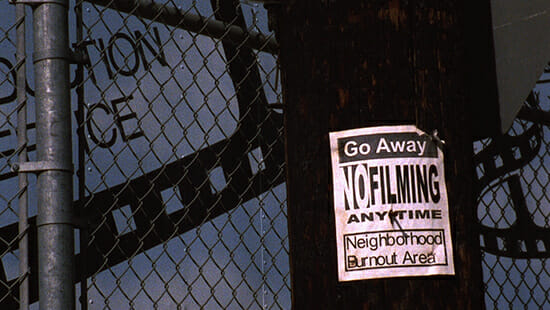
Finally, officially released in 2014, Los Angeles Plays Itself is all at once a graceful document, a lyrical portrait and a hilarious condemnation of the titular city so often represented in, and serving as the origin of, American film in the 20th century. Consisting entirely of footage from other films, from Xanadu to Chinatown and every neighborhood in between, one watches this documentary and wishes Thom Andersen had similar personal stakes in one’s own hometown. So insightful, and so excruciatingly thorough, are his analyses—of everything from the City’s architecture to its bureaucratic reputation—that LA comes to represent the ideal of a fictionalized metropolis that American cinema has sought since its beginning. And, at nearly three hours, the documentary seems almost too short, a fervent grasp at something that is practically ungraspable: the character of one of the U.S.’s biggest, most mindboggling urban centers, a portrait of American ingenuity, corruption and aesthetic brilliance rolled into one seething, relentlessly philosophical whole. Behold, America: this is the mask you die to wear. —D.S.
9. Hearts and Minds
Director: Peter Davis
Year: 1974

“I suppose it’s like any pain … you don’t remember pain too well afterwards.”
Devastating and so relentless there is little to do but watch, endure and allow it to work inextricably into your subcutaneous fibers, Hearts and Minds is more than an expansive document of the Vietnam War during the height of its controversy—it’s a study in pain: how we live with it, how we live without it and how we sustain ourselves in the grey area between. The same could be said for any war documentary that refuses to shy away from the horror of history, from Night and Fog to Fog of War, but Hearts and Minds doesn’t attempt to figure out what went so wrong or who’s to blame as it does (through countless interviews and extensive time spent embedded with troops) try to lend some reality to the nearly unbelievable events that sidled up snugly against an otherwise ignorant American way of life.
There is little that, all these decades later, is surprising about this documentary—in fact, one of its most heartrending scenes, of a small group of Vietnamese children fleeing a napalm attack, skin sloughing off of their naked skin in slates, is now iconic in its ubiquity. We are at the least always aware of the horrors of that war, or any war for that matter—but there is still plenty to be learned from Peter Davis’s masterwork. This is recent history made tactilely clear, a physical experience meant to be sublimated. No matter how much distance we place between ourselves and the atrocities of war, Hearts and Minds makes sure our thoughts never stray too far from the reality of what we’re, all of us, capable of doing to one another. —D.S.
8. Titicut Follies
Directors: Frederick Wiseman
Year: 1967
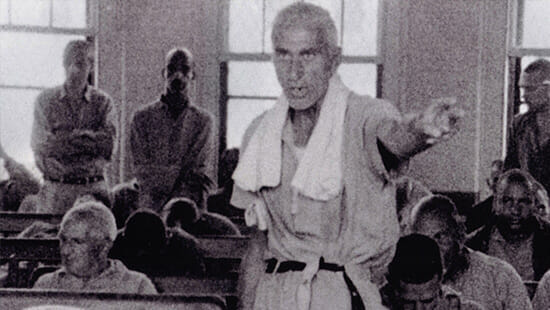
“At the time, I was teaching classes in legal medicine and family law,” Wiseman once recalled. “And in order to make the things more interesting for both me and the students, I took them on field trips. I thought I would make the cases a bit more real by taking them to trials, parole-board hearings, probation hearings and mental hospitals. One of the places I took them to was Bridgewater, a prison for the criminally insane. … It seemed fresh material from a film point of view and visually very interesting.”
From that came Titicut Follies, his 1967 documentary about Bridgewater State Hospital. Writing a proposal for the film, Wiseman stated that he wanted to “give an audience factual material about a state prison but also give the film an imaginative and poetic quality that [would] set it apart from the cliché documentary about crime and mental illness.” He succeeded: Titicut Follies is a harrowing look at the treatment of the prisoners—including scenes of one naked inmate being force-fed intercut with the same inmate’s body undergoing preparation for burial—although Bridgewater’s overseers initially didn’t have a problem with the depiction of their facility. That changed once Titicut Follies was shown to reviewers, who mentioned the inmates’ harsh treatment. It was then that the governor of Massachusetts blocked the release of the film, citing invasion of privacy for the Bridgewater prisoners and violation of an oral contract that the state would have final approval over the film. (Wiseman, for his part, insisted no such agreement was ever in place.)
“Making the film was one thing, and the litigation was something else,” Wiseman told Filmmaker in 2012. “The litigation was basically a farce, because the effort to ban the film—even though they succeeded for quite a while—was just an example of political cowardice and stupidity. I always thought of it as political theatre.” After appealing to the Massachusetts Supreme Court, he was able to show the movie in certain places, but only under incredibly strict conditions. “They decided that the film had value but could only be seen by limited audiences: doctors, lawyers, judges, health-care professionals, social workers, and students in these and related fields, but not the ‘merely curious general public,’” Wiseman recalled to Vice. “And this was on condition that I give the attorney general’s office a week’s notice before any screening and that I file an affidavit after that everyone who attended was, of my personal knowledge, a member of the class of people allowed to see the film.” —T.G.
7. The Thin Blue Line
Director: Errol Morris
Year: 1988
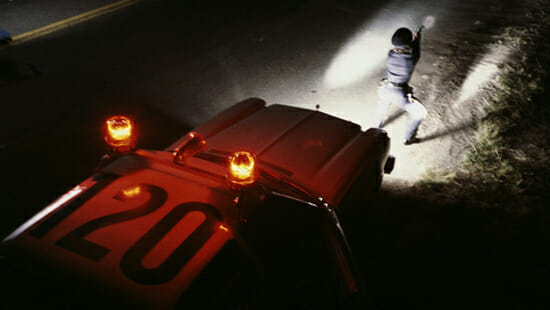
A little after midnight on Nov. 28, 1976, Dallas police officers Robert Wood and Teresa Turko made a routine traffic stop for a car driving without headlights. When Wood approached the vehicle, the driver pulled a handgun and shot him five times. The car sped off into the night while Turko fired hopelessly in its wake and Wood died at her feet. A cop killer was on the loose in Dallas.
Turko’s recollections of the driver were meager, and 50 investigators worked through the sparse clues without a single witness. But less than a month later, on Dec. 21, Dallas police arrested Randall Dale Adams, a 28-year-old itinerant laborer from Ohio. Though Adams claimed his innocence, a jury found him guilty and the judge handed him the death sentence. The man once branded in court as “Charles Manson” was safely locked away. Dallas breathed again.
Nine years later, in 1985, a documentarian named Errol Morris drifted into town from New York. Morris had never heard of Randall Dale Adams; he was in Dallas to speak to a doctor. By the time Morris left three years later, he had freed an innocent man, identified a murderer, uncovered widespread corruption and earned death threats, law suits and debt. He had also made one of the finest documentary films of all time—a nimbly stylized and obsessive pursuit of truth; a study in and a shrug to the pitfalls of myopia; the Serial podcast before podcasts ever existed; an epic story of life, death and the misuse of power that has repercussions to this day. He called it The Thin Blue Line. —Neil Forsyth
6. Grizzly Man
Director: Werner Herzog
Year: 2005

Leave it to Werner Herzog to take on a subject as peculiar and tragic as that of Timothy Treadwell, the bear enthusiast who, along with his girlfriend, was killed by his wild obsession in 2003. A sing-songy, pleasant, dangerously deluded man who believed his beloved grizzly companions knew and trusted him, Treadwell, over the course of 13 summers spent in Alaskan national parks, approached bears with both a religious reverence and folksy casualness—the latter of which arguably cost him his life. Treadwell self-anoints himself “kind warrior” and, alternately, “samurai,” and at one point tellingly declares that animals rule, but “Timothy conquered.” Rooted in Treadwell’s own footage, Grizzly Man will divide camps between those who find him a reckless idiot and those who enjoy him as a kooky nature lover, or both. For his part, Herzog is a sympathetic yet level-headed narrator, his even voice and expositional asides setting the tone for a restrained, expertly crafted film. Far from exploitative—existing audio footage of the couple’s death is not heard onscreen, just reacted to and discussed—Grizzly Man is a sensitive, supremely fascinating glimpse of the primal forces within us and apart from us, and what happens when they can’t be reconciled. —A.S.
5. Night and Fog
Director: Alain Resnais
Year: 1955
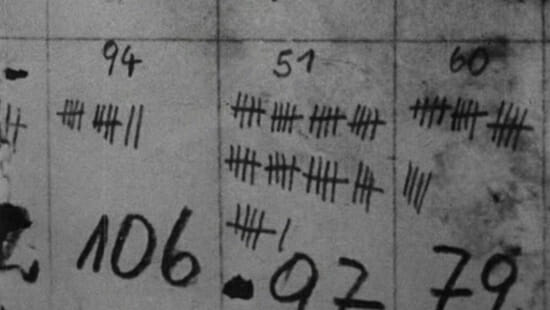
Released 10 years after the liberation of prisoners from the Nazi concentration camps, Night and Fog was almost never made. Any number of reasons contributed to its tenuous birth: that noted documentary director Resnais refused repeated attempts to helm the movie, insisting that a survivor of the camps be intimately involved, until screenwriter Jean Cayrol came on board, himself a survivor of the Mauthausen-Gusen camp; that Resnais and collaborators battled both French and German censors upon potential Cannes release; or that both Resnais and Cayrol themselves struggled with especially graphic footage, unsure of how to properly and comprehensively depict the unmitigated horror of what they were undertaking. Regardless, the film found release and is today, even at only 31 minutes, an eviscerating account of life in the camps: their origins, their architecture and their inner-workings.
Yet, most of all, Night and Fog is a paean to the power of art to shake history down to its foundational precedents. Look only to its final moments, in which, over images of the dead, emaciated and piled endlessly in mass graves, narrator Michel Bouquet simply asks to know who is responsible. Who did this? Who allowed this to happen? Which is so subtly subversive—especially given the film’s quiet filming of Auschwitz and Majdanek, overgrown and abandoned, accompanied by lyrical musings and a strangely buoyant score—because rarely do documentaries demand such answers. Rarely do documentaries ask such questions. Rarely is truth taken to task, bled of all subjectivity, and placed naked before the audience: Here is evil, undeniably—what will you do about this? —D.S.
4. Grey Gardens
Directors: Ellen Hoyde, Albert Maysles, David Maysles, Muffie Meyer
Year: 1975

Co-directed by recently deceased documentarian Albert Maysles (Iris), this influential doc—another title preserved in the U.S. Film Registry—chronicles the lives of Edith “Big Edie” Ewing Bouvier Beale and her daughter, “Little Edie,” a reclusive mother and middle-aged daughter duo related to Jacqueline Kennedy Onassis. When Big Edie’s husband left her, she and her Little namesake continued to live for a half century in the titular East Hampton estate, which fell into dire disrepair—so much so that Jackie had to step in to save it. The socialites’ eccentric, Havisham-esque existence drew Albert and his brother David to their tale—natural born hams, the ladies dance, preen and otherwise play to their directors’ handheld cameras, at that time a somewhat revolutionary technique. It feels almost too intimate. The result is a wistful, sometimes funny, often sad portrait of codependency and nostalgia made more poignant by the Maysles’ voyeuristic storytelling. —A.S.
3. Sans Soleil
Director: Chris Marker
Year: 1983

Unfortunately—or perhaps saliently—the best documentaries are those that revel in their medium, that roll around in and burrow into and laugh at the flagrant manipulation of truth that lies at the heart of even the basest cinéma vérité. Leave it to Chris Marker, who’d already trolled his synapses with the sci-fi masterpiece La Jetée, to craft an unparalleled film about the imperfections of filmmaking—and cats. So many cats.
Compiled of disparate images from Marker’s colleagues, his own travels and filmmakers such as Andrei Tarkovsky and Alfred Hitchcock, focused prominently on Japan and Guinea-Bissau out of many locales, Sans Soleil is, above all, a meditation on the imperfection of memory. Which is why its most striking images will forever stay with you: the poaching of a giraffe, the vultures that eat the giraffe’s softest remains, the shrine to cats, the JFK robot, the petrified desert animals, the art exhibit of taxidermied creatures posed in erotic gestures, the seemingly primeval digital manipulations of celebrity vignettes, the teenagers dancing, and the many visions of extreme emotion forever lost to time. Seemingly about everything just as it is about one person’s awe-struck experiences trotting across the globe, Sans Soleil touches on the ineffable with the wit and grandeur of someone remarkably in sync with some sort of subconscious matrix that binds us all, with Jungian fervor, inextricably together. —D.S.
2. Shoah
Director: Claude Lanzmann
Year: 1985
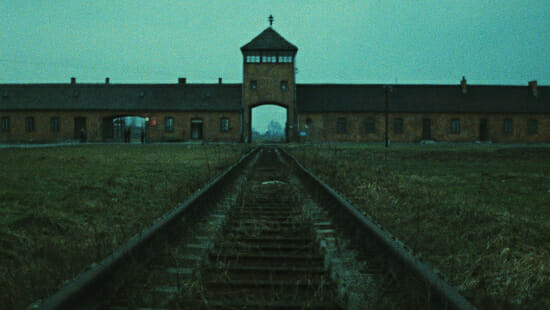
Describing this 10-hour landmark of documentary filmmaking—of filmmaking in general, really—is, ostensibly, an easy task: Director Claude Lanzmann foregoes using any archival or historical footage to allow only the testimonials of survivors and historians to tell, in breathtaking detail that is both sweeping and deeply intimate, the story of the Holocaust. We are given hours to reflect as we join these beleaguered people: They walk us through Treblinka, through Auschwitz, through the Warsaw ghettos, through Chelmno, where the first mobile gas chambers were used—through the night and fog of memory. And though the film has been, of course, greeted with controversy, especially by Poles who feel that the film in many ways indicts them in the atrocities committed against the Jews, there is no other cinematic experience like it. There is only this petition: you must watch this film; you must live inside this film for as long as it takes; you must understand every single ounce of pain it recalls. And, in feeling, down to your most empirical bits, the power of filmmaking, you must leave this film forever changed. —D.S.
1. Hoop Dreams
Director: Steve James
Year: 1994
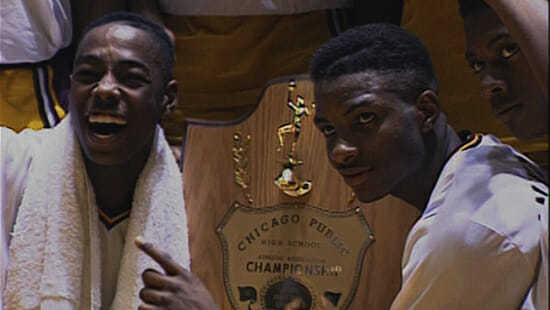
The documentary labeled by none other than Roger Ebert as the single best film of the 1990s is alternatingly beautiful and crushing, an intense profile of life in inner city Chicago and dreams of escape through basketball—of all things. The story of two young men recruited by a wealthy, predominantly white high school to play basketball, it raised serious questions about modern education, race and socioeconomic status, all of which we’re still asking today. Shot over the course of five years and condensed from 250 hours of footage, it’s a sprawling story that leaves out absolutely nothing in its realistic portrayal of multiple families, yet was snubbed from a nomination in the Academy’s best documentary category, leading to public and critical outcry. It just doesn’t get any more real than this, in ways both illuminating and heartbreaking. Both of the young men profiled had older brothers gunned down in Chicago street violence in the years that followed the film’s release, one in 1994 and another in 2001. Still, interest in their story has remained strong—the restored, Criterion Collection Blu-Ray was just released for the first time last month. —J.V.
GET PASTE RIGHT IN YOUR INBOX
The best music, movies, TV, books, comedy and more.